In this article, we’ll cover everything you need to know about visiting Wadi Rum. We’ll tell you about the different Bedouin camps, how the Wadi Rum Jeep tours work, what to expect with a 1-day tour and a 2-day tour, and top tips for planning your trip to Wadi Rum.
Welcome to one of the world’s great deserts – Wadi Rum. This place is unlike anywhere else on Earth. In fact, that’s probably why it’s been used as the backdrop for so many otherworldly movies, like Dune, the Martian and Star Wars, amongst others. But there’s more to Wadi Rum than its beauty!
If you’re planning a trip to Wadi Rum, we want to help you make it the best trip yet. It’s truly one of the most unique places to visit in Jordan and well worth adding to your Jordan itinerary, whether you’re coming here for 1 week or 14 days.
In this article, we’ll give you all the tips we learned from our trip there. We’ll also give you our honest opinion about the Bedouin camps and the Jeep tours and help you understand what to expect from your trip to Wadi Rum, whether you’re going for 1 night or 2.
We’ll help you prepare and be ready to have an amazing time in Wadi Rum!
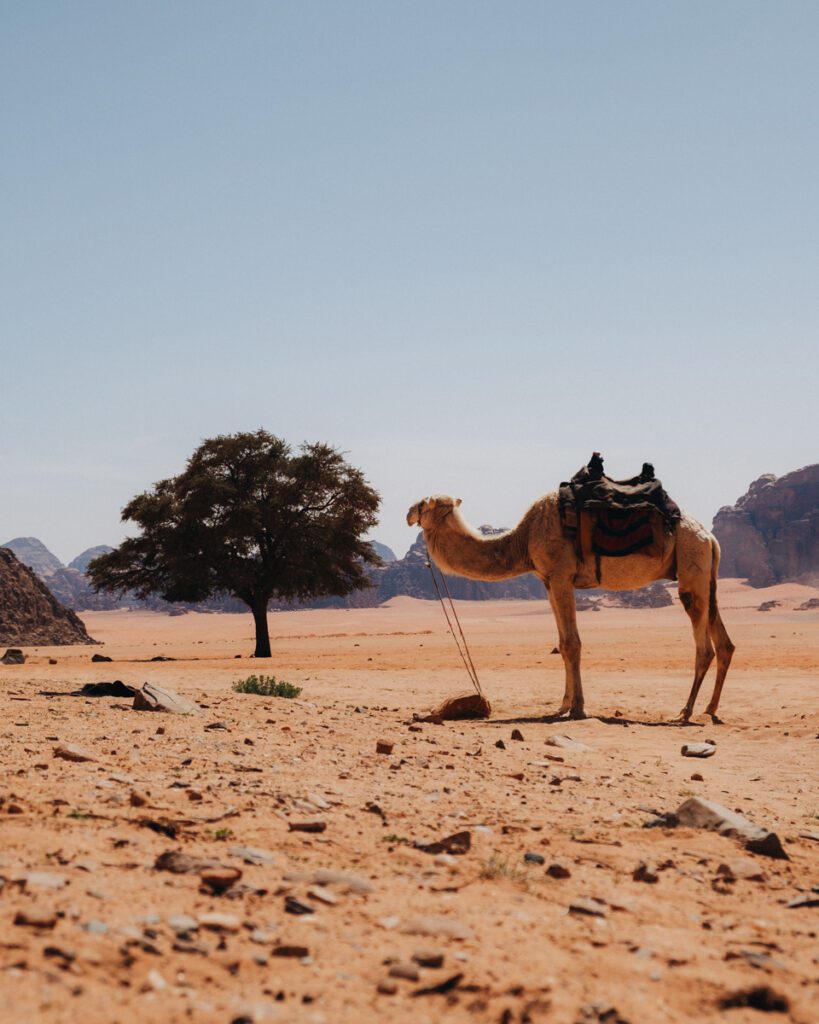
This article may contain affiliate/compensated links. For more information, please see our disclaimer here. We take all the efforts necessary to ensure the information included in this post is accurate, correct and current, sometimes, things just change! Travel information like opening hours, business operations and prices may change. If you find anything in this post that is incorrect or outdated, please let me know in the comments so I can update it for other readers. Cheers!
We love helping you plan amazing trips. If you need any of these services, consider booking them through our affiliate links. Without costing you anything extra, you will be helping support us so we can continue to write these blogs for you.
We thank you again for your continued support.
🏠 Find the perfect place to stay with Booking.com
✈️ Get the cheapest flights with Skyscanner
🚣 Book your favorite activities with Viator
💻 Make sure you have everything you need for your epic trip by checking our store on Amazon
Table of Contents
Everything to know about Wadi Rum
Like many of the highlights in Jordan, Wadi Rum has a significant meaning for Jordanians and tourists alike. It’s not every day you get to experience the grandeur and beauty of a desert of this size.
Lawrence of Arabia might have described it best when he said that Wadi Rum is Vast & Echoing. It has a landscape that makes you think you’re on a different planet! Sheer-sided mountains forged in time by sandstone and granite that can reach over 1,700 meters in height. Open valleys that highlight the vastness of this space. Narrow canyons that cut deep into the mountains. Some even reveal ancient rock carvings.
Wadi Rum is truly a special place, that’s why 720 square kilometers of it are now considered a protected area. This is because tourism has caused some shifts in the ecosystem. Despite being a desert, many animals call this place home. If you’re lucky, you may spot a Syrian wolf, striped hyena or Nubian ibex. However, you’re more likely to spot camels, birds and insects.
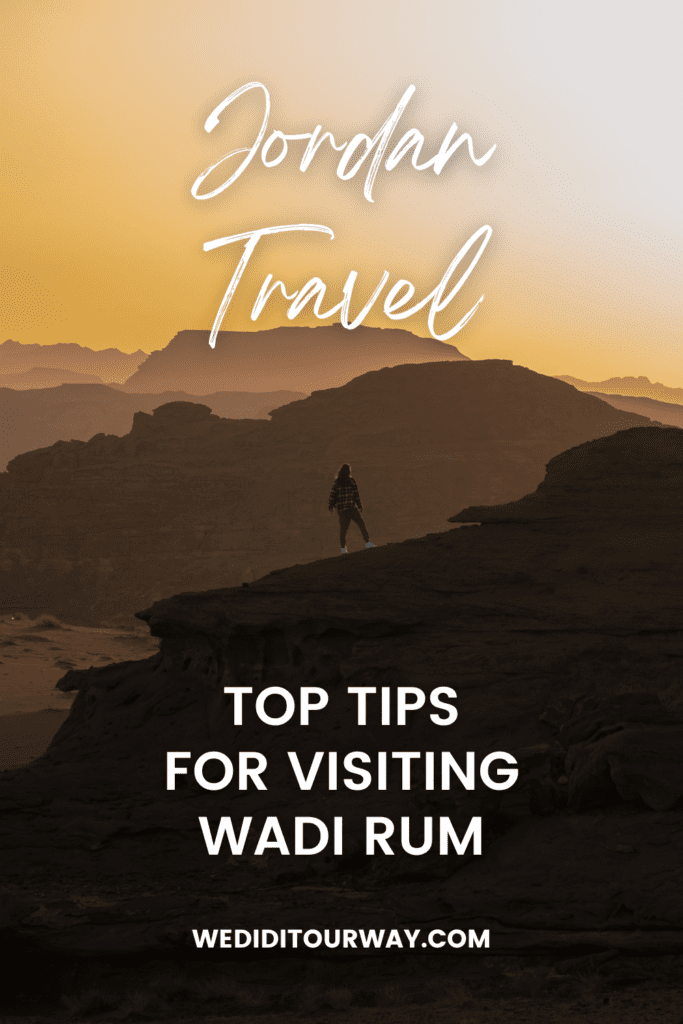
The unique Wadi Rum environment
Often referred to as the Valley of the Moon, Wadi Rum captivates travelers and locals alike with its otherworldly beauty and profound cultural significance. When talking to locals, so many stated that Wadi Rum was their favorite place in Jordan. We can’t blame them!
Nestled in the southern part of Jordan, this desert landscape is characterized by towering sandstone cliffs, carved by centuries of wind and water erosion. You can find a maze of canyons, arches, and natural rock bridges sprinkled in this vast and endless desert. You’ll be able to visit many of these formations on your Jeep tour.
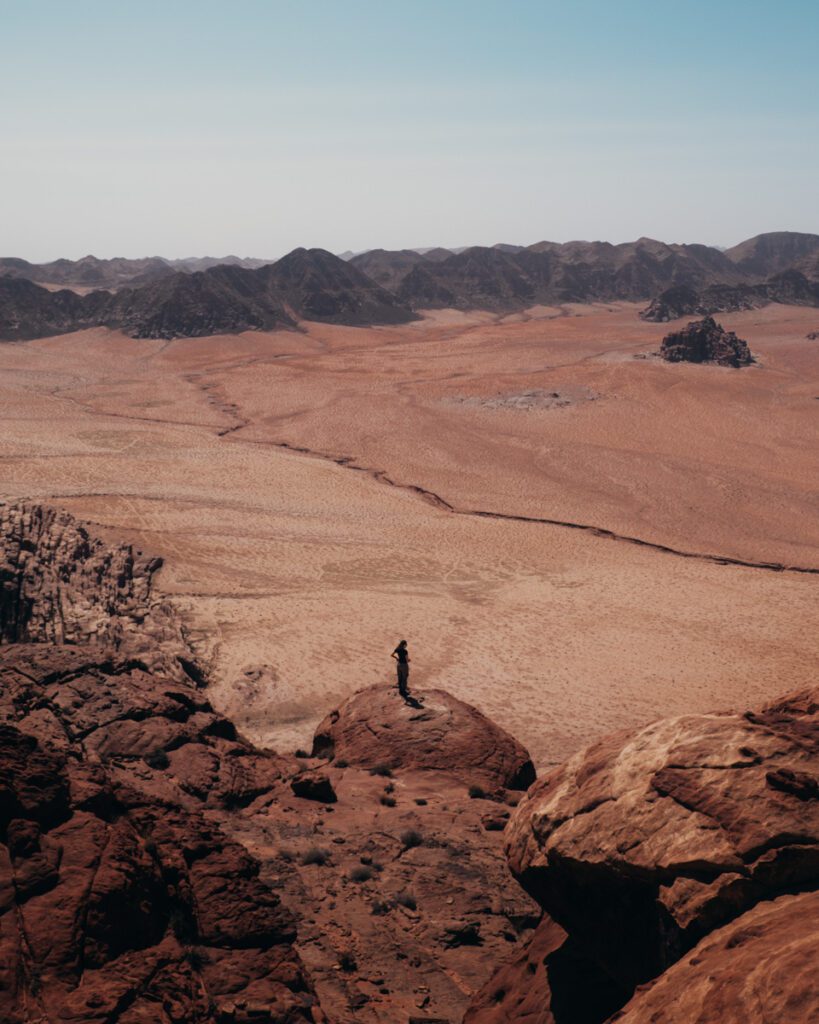
Wadi Rum holds immense historical and cultural importance as well. For centuries, it has served as a crossroads for trade routes and a refuge for Bedouin tribes, whose nomadic lifestyle is deeply intertwined with the desert’s story. Here, you can also find ancient petroglyphs and inscriptions, remnants of past civilizations that once roamed these lands.
Today, Wadi Rum continues to attract travelers looking to immerse themselves in its timeless landscapes and experience Bedouin hospitality.
Wadi Rum and the Bedouins
We can’t tell the story of Wadi Rum without digging into one of its most significant inhabitants – the nomadic Bedouin tribes. They have lived in these lands for centuries. These resilient people have forged a unique bond with the land, drawing sustenance from its sparse resources and finding shelter amidst its rocky outcrops.
Some have kept the olden traditions of their culture and still live in huts made of goat hair. You’ll even notice that many of them still carry on with activities like hearing goats or raising camels.
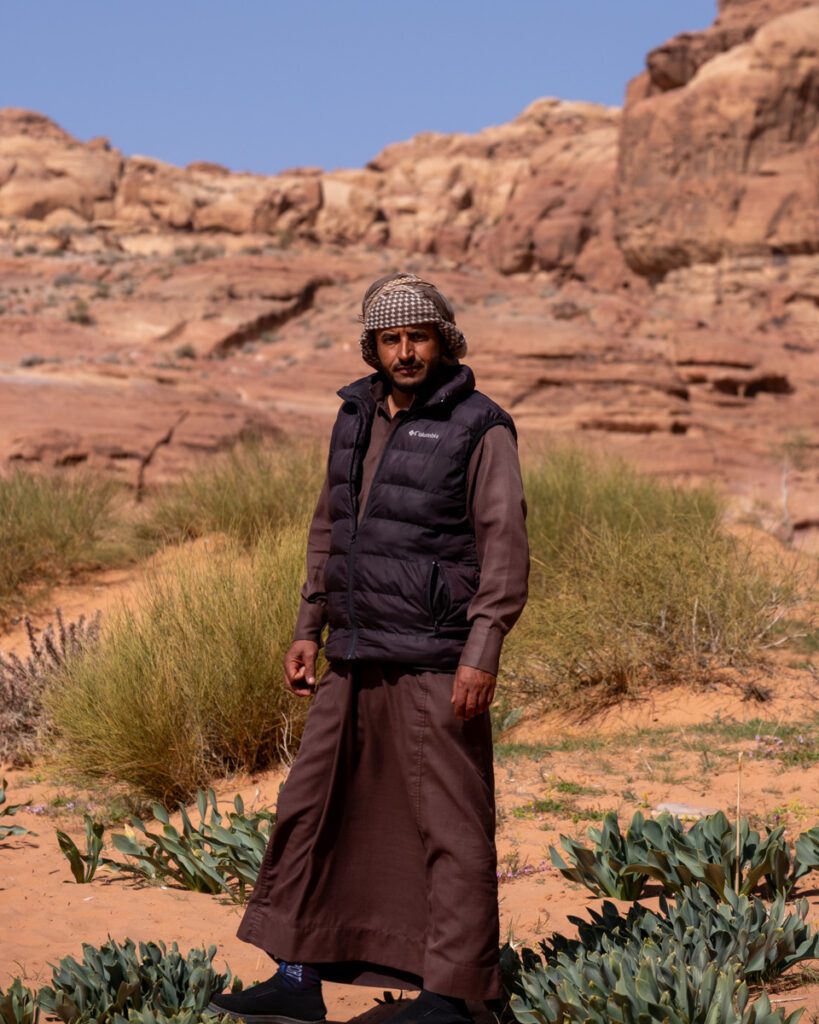
Although some partake in more traditional lifestyles (don’t be surprised to hear that your guide had 12 children and 3 wives!), many have used the fascination visitors have with the desert to set up tourism businesses. In fact, most of the camps (if not all), are owned by Bedouins. So are the shops you’ll see at all the tourist spots, and the camel rides you can hire.
Let’s jump into all the details you need to visit Wadi Rum, from tours to accommodations and more.
The Wadi Rum Visitor Center
Before entering the Wadi Rum village, you will come upon the Wadi Rum Visitor Center on the left side of the road. All visitors going into the Wadi Rum reserve have to register here. This is also where the Jett Bus will drop you off.
If you have the Jordan Pass, you will be asked to show it. You’ll also be asked to state the name of the camp you’re staying in. If you don’t have a camp, know that you’ll be hassled by vendors at the Visitor Center.
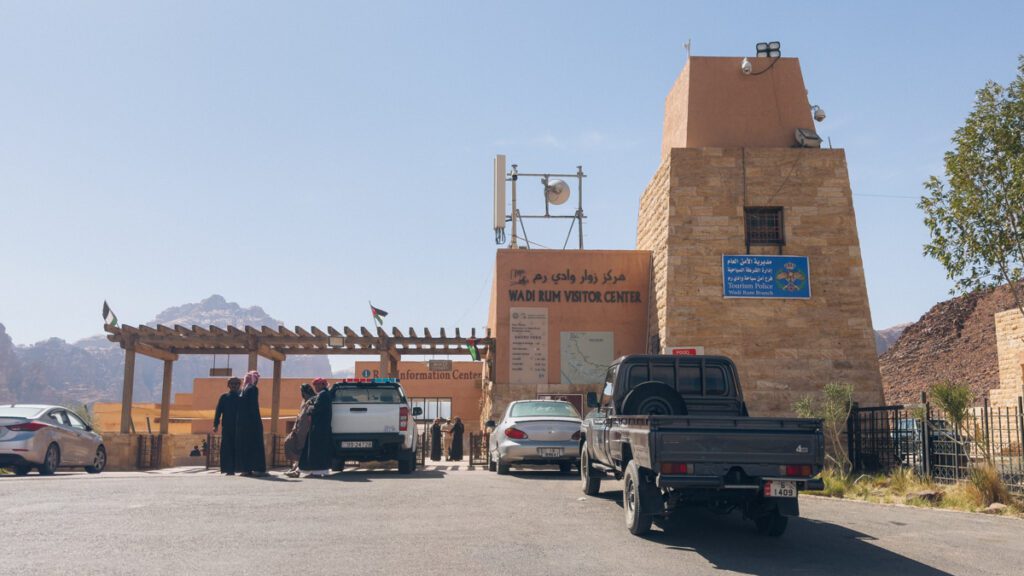
We highly recommend booking your tour and your accommodations before getting here. First, to avoid the questions and haggling of the vendors. Next is to get a better price. Since you can’t visit the Reserve without a guide, the vendors can ask for more than what you’d pay online.
There is an ATM right next to the camp’s entrance. However, we only recommend you use it if you don’t have cash on you. Our main recommendation is to come to Wadi Rum with cash. The ATM here will charge between 5-7 JOD for your transaction. But if you find a Jordan Kuwait Bank in one of the major cities, you won’t pay any fees.
There are a few shops lining the Visitor Center, but don’t shop there. Their goods are overpriced, You’ll end up paying a significant amount more than what you’ll get elsewhere in the country.
Train ride at Wadi Rum
When you book your Jordan Pass, you’ll be asked if you want to get the Train Ride Experience. Derek took care of this booking and didn’t choose it, so we didn’t get to see it, but here’s what you should know about it.
This train experience is based on the history of the region. In 1916, Arabs launched a revolt against the oppression of the Ottoman Empire’s government. They demanded freedom and independence. This was the great Arab Revolt that was led by Sharif Hussein bin Ali and his sons. If you visit Aqaba, you’ll be able to learn more about his legacy.
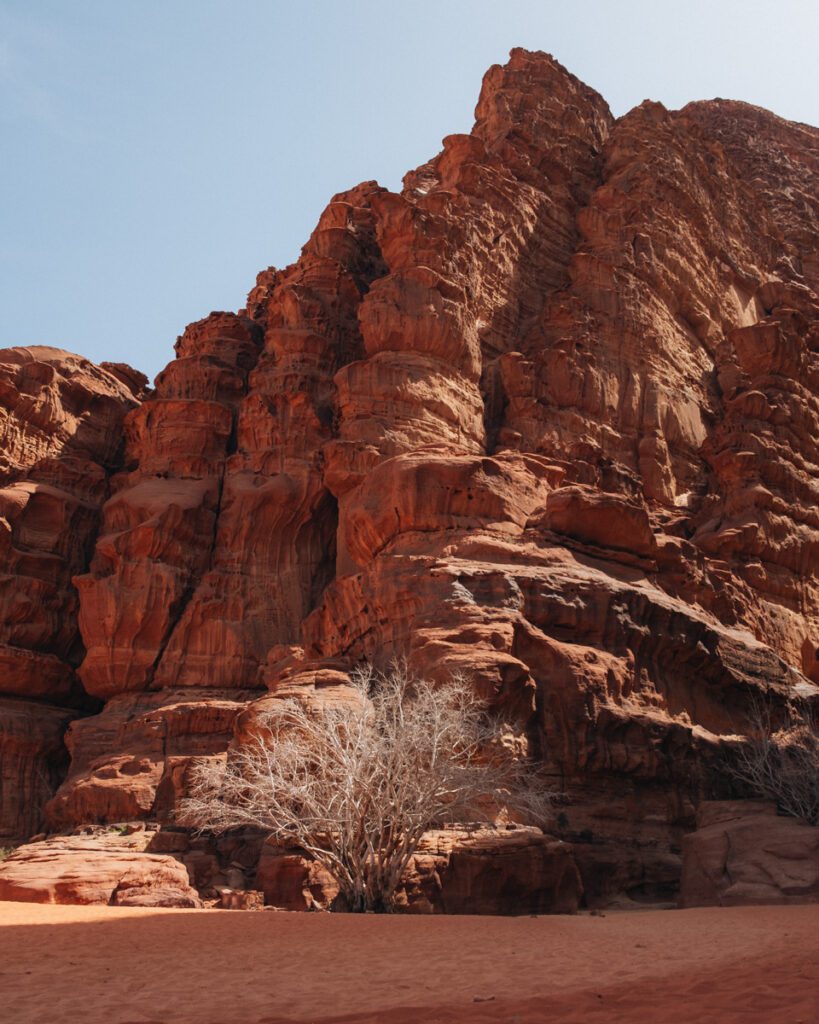
The revolt fighters fought the Ottomans in fierce battles where they didn’t have the necessary tools to fight off this strong opponent. Some of these battles took place in Wadi Rum. Here, the Ottoman had access to the railway which provided an almost infinite supply of soldiers and arms. This is the story you will see unfold on the train.
First, you’ll board the authentic Hijaz Railway train, accompanying Ottoman forces heading to recapture a fortress lost to the revolt fighters. But things don’t go as planned.
The journey starts here, around 22 km after the Wadi Rum main street entrance. The train ride finishes here at the Wadi Rum train station. The experience takes place every Wednesday and Sunday. You should get there 15 minutes before the train journey starts.
Also, be sure to book your tickets ahead of time here, if you don’t purchase them with the Jordan Pass.
Best things to do in Wadi Rum
Since the only way to enter the Wadi Rum Reserve is on a guided tour or through accommodations, there isn’t much flexibility to what you can do here. The sites and attractions you’ll see will depend on if you book a 1-night tour or a 2-night tour. We’ll get into those details later, but first, let’s dive into the top attractions in Wadi Rum.
1. Take a Jeep tour to see all the top attractions in Wadi Rum
If you plan on seeing anything in Wadi Rum, you’ll need to go on a Jeep tour organized by your accommodations or by their partner Bedouin providers. In Wadi Rum, they say they are many families, but one tribe. So don’t be surprised if there is a blood connection between the different providers in the area.
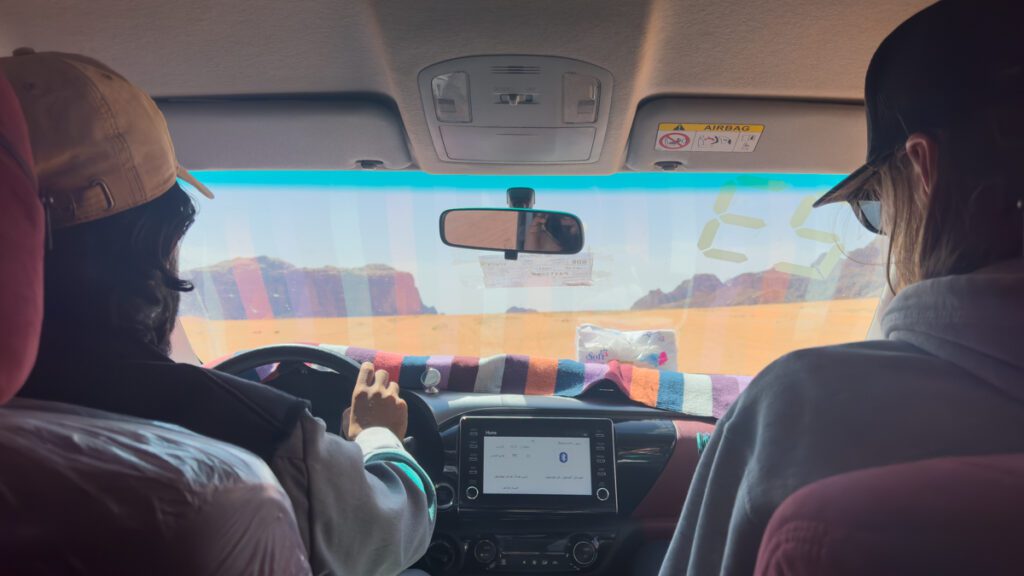
During the Jeep tour, your Bedouin guide will take you from one attraction to another. Almost all providers follow the same route, so make friends with the groups and people you see at one site, because chances are, you’ll be seeing them at every other site.
Also, depending on your guide, don’t expect much information or interaction with your guide. Often, they would drop their visitors off at a site, and let you roam around until you come back to them. They’ll wait for you in the shop/tent at the foot of the attraction, and enjoy tea or a hookah with their friend or cousin.
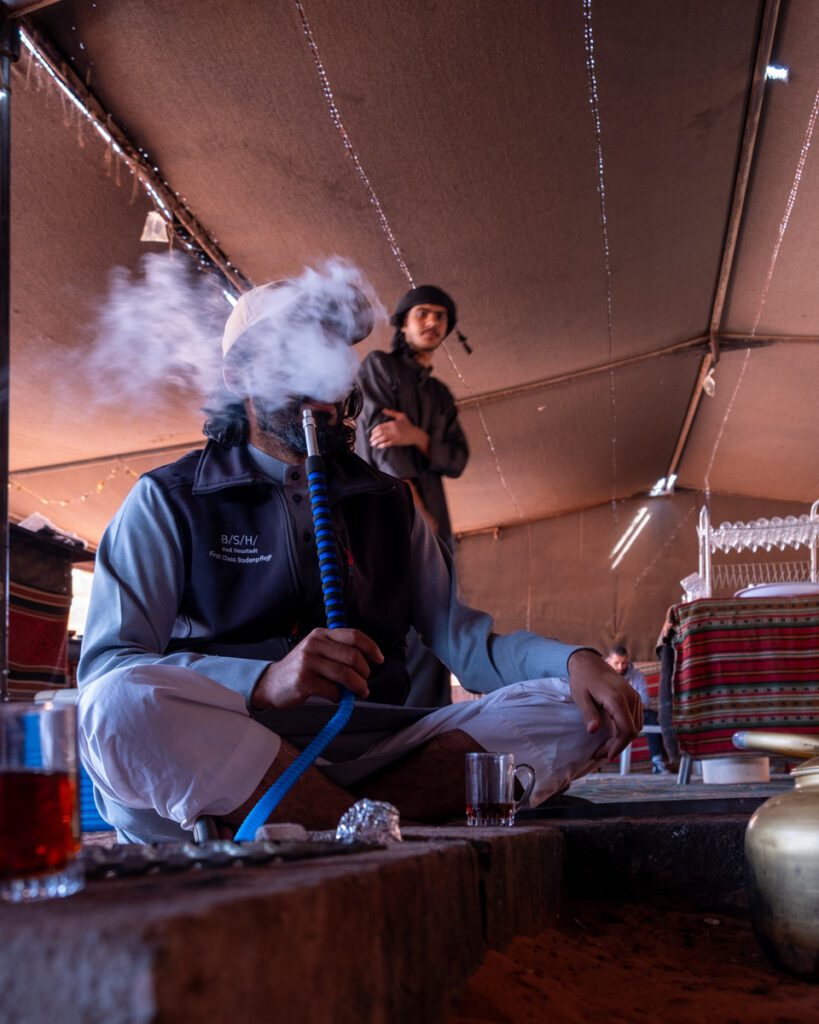
Speaking to other travelers, this seemed to be the main way guides operated. So think of the Jeep tour as more of a mode of transportation than anything else.
Details about the Jeep tours in Wadi Rum
When you book your Jeep tour package for Wadi Rum, you’ll have to choose between a 2 to 6-hour jeep tour. What you end up seeing and the cost depends on the tour you choose.
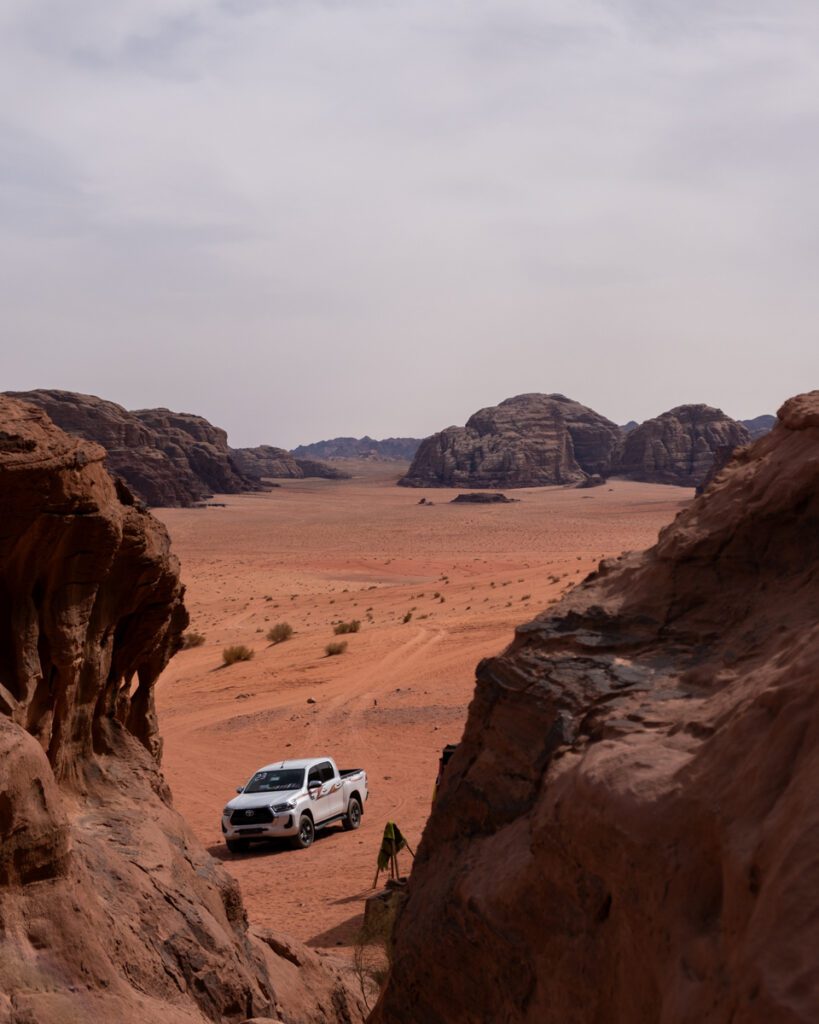
We spoke to about 5-6 different tour providers and here are some of the prices we got for 2 people:
- 6-hour tour 120 JOD
- 4-hour tour: 60 to 100 JOD
- 3-hour tour: Between 50 to 80 JOD
- 2 hour with sunset: 35 JOD
Usually, they will offer lunch during the Jeep tour. And they may do it on your first day or the next day, depending on when you arrive or leave the camp.
If there are activities you’d like to do or specific sites you want to see that we’ve listed below, we recommend getting in touch with your Jeep tour provider and asking them to create a personalized package for you. We’ve noticed that most are willing to create a tour based on your interests.
2. Discover Lawrence’s spring
As we mentioned, Wadi Rum played a significant role in the history of the country, as did “Lawrence of Arabia”. T.E. Lawrence was a British military officer. He played a key role in the Arab Revolt against the Ottoman Empire during World War I.
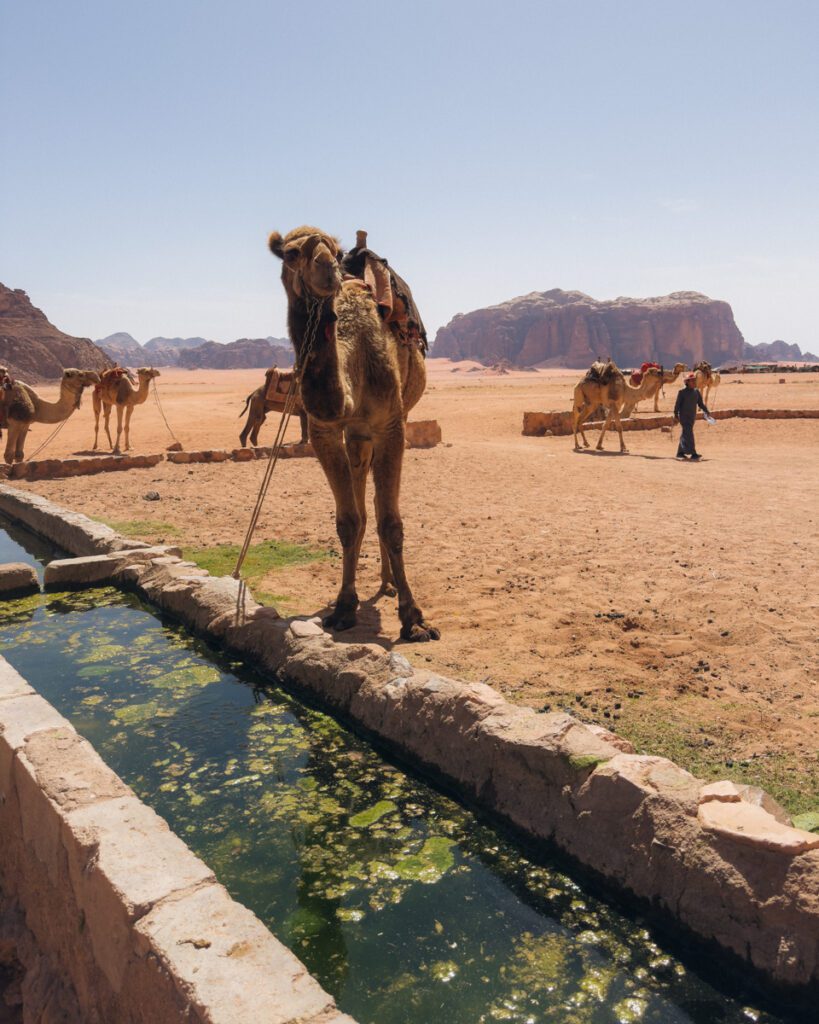
The first attraction you’ll see on your Jeep tour is Lawrence’s Spring or Lawrence’s Well, a natural water source. According to legend, it’s believed to be the spring where T.E. Lawrence reputedly replenished his water supply during his time in the region. They also say that this is where Lawrence would wash during the Arab Revolt.
You’ll see camels drinking at the spring. And by the water, you’ll also find this huge rock that has ancient inscriptions on it. Apparently, these are from Nabatean times.
3. Visit Khazali Canyon in Wadi Rum
On your jeep tour in Wadi Rum, you’ll visit the stunning Khazali Canyon. It’s a narrow sandstone gorge carved by millennia of wind and water erosion. Although beautiful, that’s not why tours stop here.
Inside the canyon, you’ll find towering walls adorned with ancient inscriptions and petroglyphs. It is believed that some date back thousands of years.
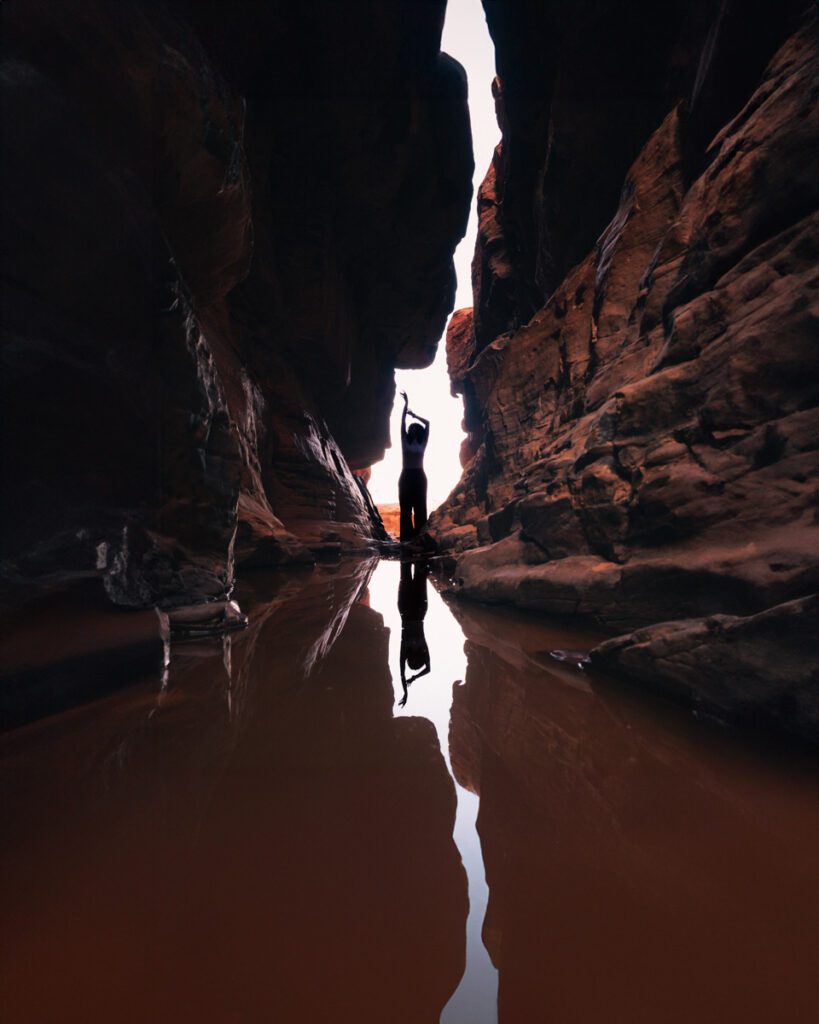
If you have the time and are feeling adventurous, you can hike through the canyon and marvel at its natural beauty. Just know that there are big puddles and parts where your footwear will get wet.
4. Hike up a sand dune or rock formation
The beautiful thing about Wadi Rum is that you can go hiking pretty much anywhere. Up a rock formation, sand dunes, whatever. And what awaits at the top of the spot is an amazing view!
The desert is truly a vast place. And the best way to realize that is to get a bird’s eye view from the top of a dune. We’ve never felt so small and so humbled than standing on top of a dune, looking out at the huge Wadi Rum desert.
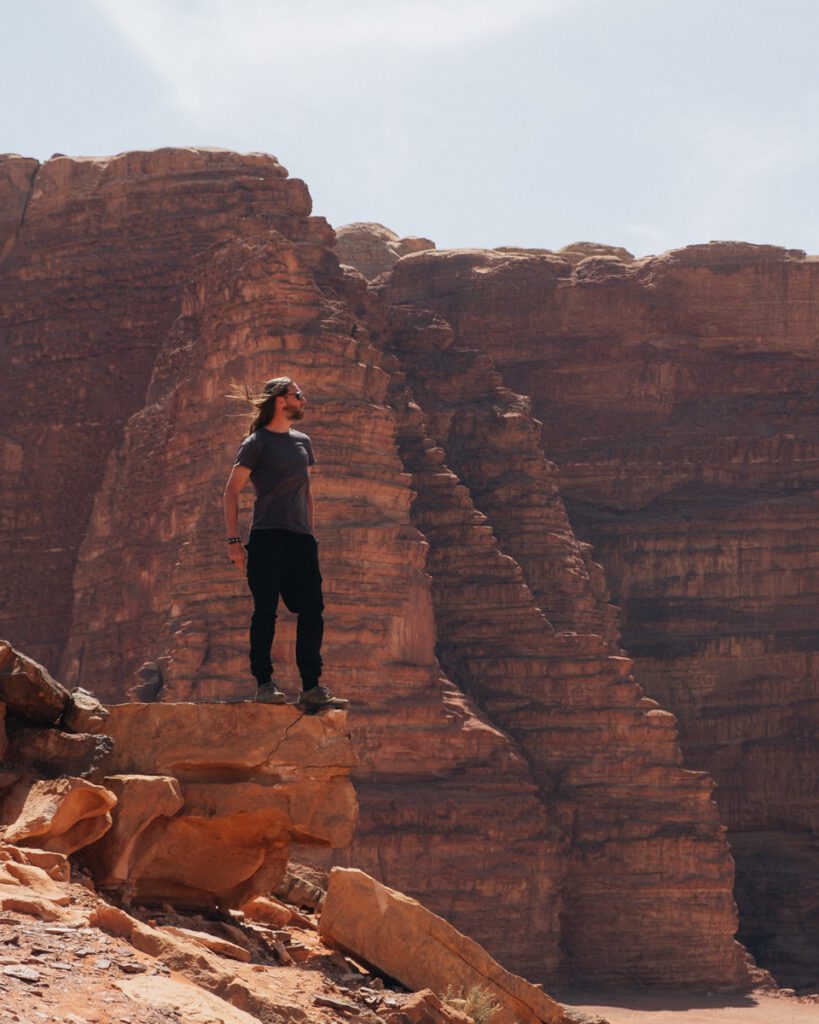
We recommend avoiding going up in the hot heat, in the mid-day or afternoon. Instead, head there in the morning or later when the heat is not so stifling.
5. Catch a sunrise or sunset in Wadi Rum
If you plan on climbing to a viewpoint, you should do it for sunrise or sunset. That’s when the views are even more amazing!
Although they say the best sunsets are in the summer and winter, we saw some great ones in the spring. However, we do admit that on the 2 nights we spent in Wadi Rum, we only got 1 good sunset and the sunrises weren’t colorful.
Still, we highly recommend you catch a sunrise or a sunset. Being surrounded by the vastness and the quiet aura of the desert is really special.
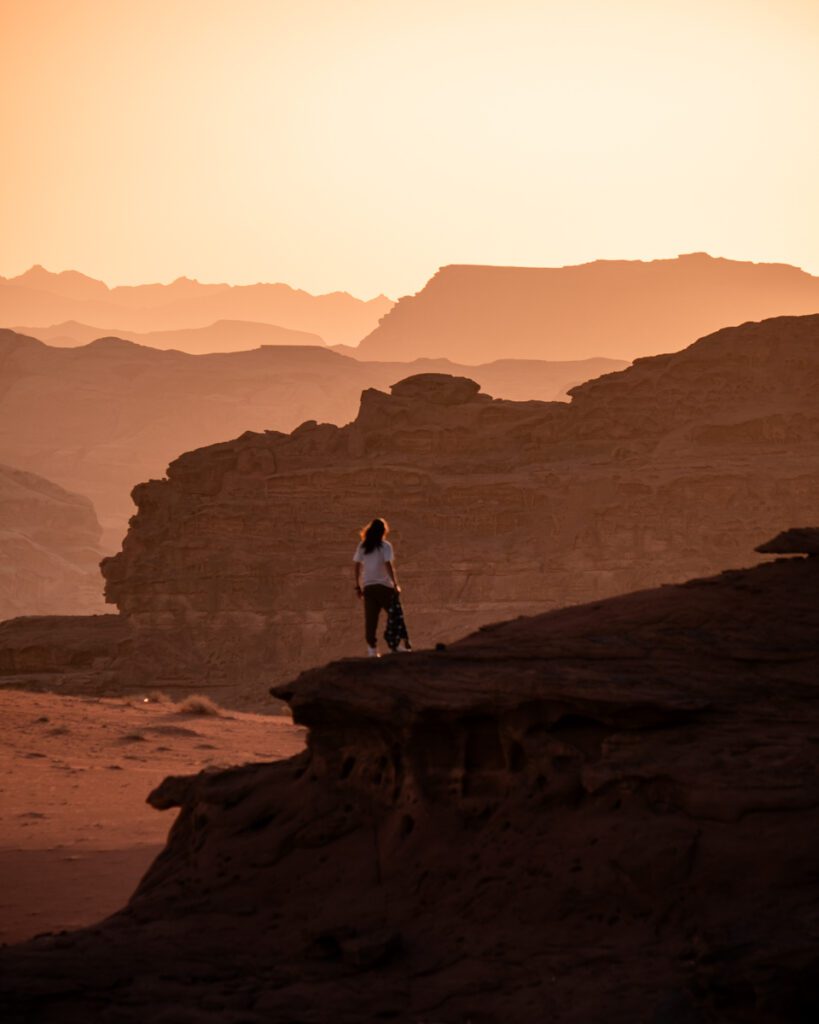
6. Visit the small and big arches, must-sees in Wadi Rum
There are plenty of rock formations in Wadi Rum. So many of them have been forged and carved by water, wind and the brute force of the elements. This has made it so that you have a few different shapes that have formed, and even more surprising, are the arches you can find here.
There are 3 famous ones you can visit on your Jeep tour through Wadi Rum. The Small Bridge and the Big Arch are more easily accessible and you’ll see them on your 1 or 2-day tour in Wadi Rum. The third is Burdah and you’ll see it if you go deeper into the desert on a longer tour.
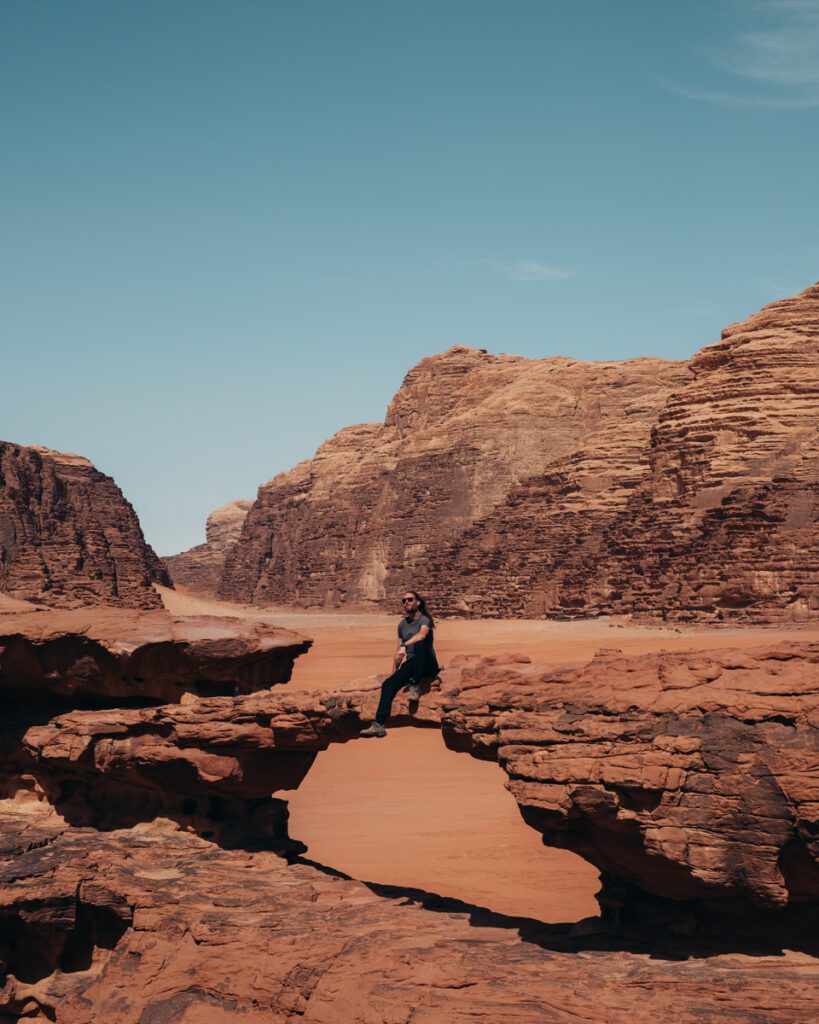
The small bridge is named this way because it’s the smallest of the three. It has a span of approximately 4 meters and it’s a gap in the rock formation that makes it look like a bridge. If you descend to the bottom part of the ‘bridge’, you could easily touch the bridge, if you’re as tall as Derek! Standing on the top of the bridge and the surrounding rock formations, you’ll get a great view of the red sand valley. You can also see famous mountains like Jabal Rum, Jabal Um Ishrin and Jabal Khazali.
The big arch is known as Um Fruth rock bridge. It’s probably one of the most photographed places in Wadi Rum. Standing at a tall 15 meters up from the desert floor, this arch looks much taller than it is. But standing up there, you is not for the faint of heart. Although the climb looks steep, it’s quite easy. The rock is very ‘sticky’, it has great grip. And following the footsteps that have been forged into the surface, you can easily ascend without any assistance.
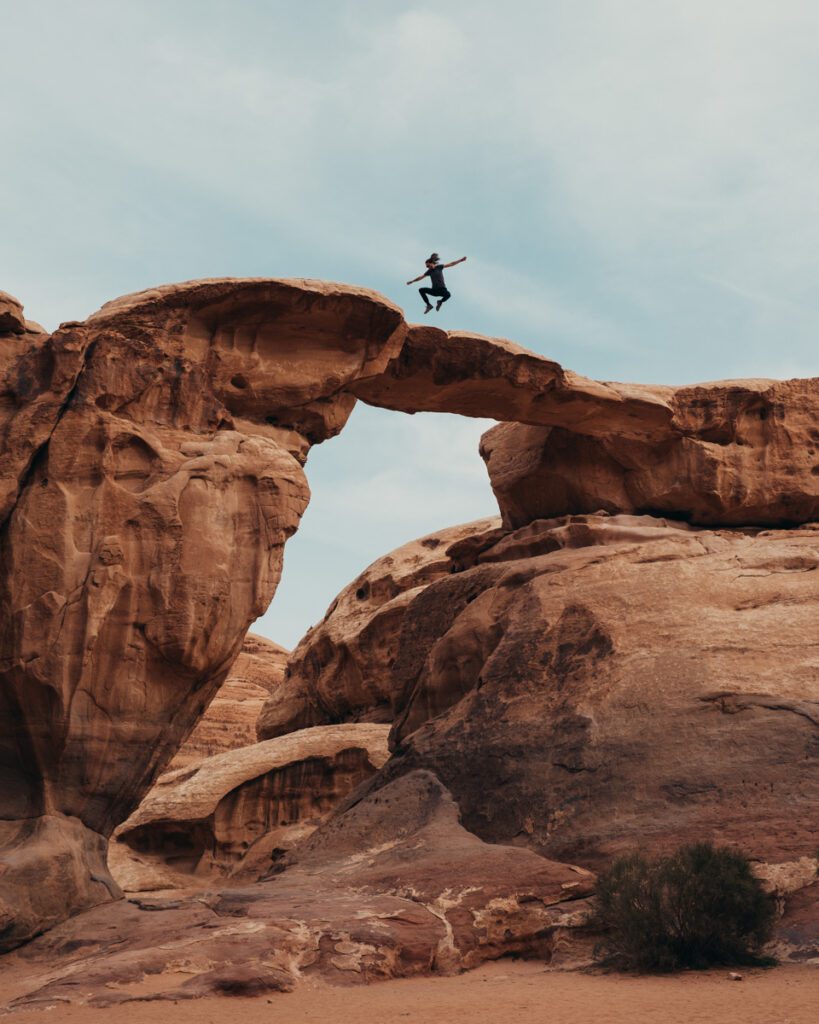
The third arch, Burdah rock bridge, is lesser known and harder to get to. Jabal Burdah and this rock bridge are located in the southeast section of the protected area. Standing at 35 meters high, this rock bridge is considered to be one of the highest in the world, let alone Wadi Rum! Most people won’t see this (we didn’t) because getting here is about 1.5 hours long, and then, you have to hike up the mountain. This is one of the places only people staying for more than 2 nights will visit. But from what we hear, the views are spectacular here.
7. Check out the Seven Pillars of Wisdom & Siq Um Tawaqi
These 2 formations are made famous by T.E. Lawrence. The first, the Seven Pillars of Wisdom, has its name derived from T.E. Lawrence’s autobiographical work, “Seven Pillars of Wisdom”. In this publication, he describes the natural wonder in detail. The formation consists of seven towering sandstone columns rising from the desert floor, sculpted by centuries of erosion.
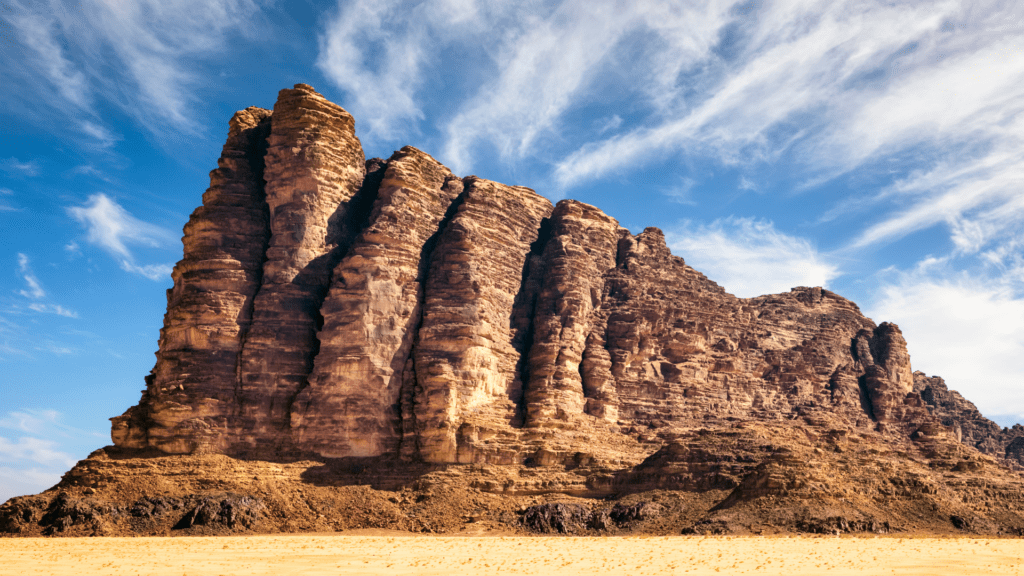
The second, Siq Um Tawaqi, is a narrow canyon, similar to the famous Siq in Petra. Siq Um Tawaqi has a picturesque passage through towering sandstone walls and winding pathways. The canyon is known for its dramatic rock formations, intricate geological features, and occasional ancient inscriptions.
These two sites are located further into the Wadi Rum desert, so depending on how many days you’re spending here, and what Jeep tour you take, you might not see them either.
8. Try to make out the different rock shapes in Wadi Rum Desert
Erosion and the brute force of the elements have played quite a number on the rock formations in Wadi Rum. 2 of the most notable formations you’ll see are the Mushroom Rock and the Chicken Rock.
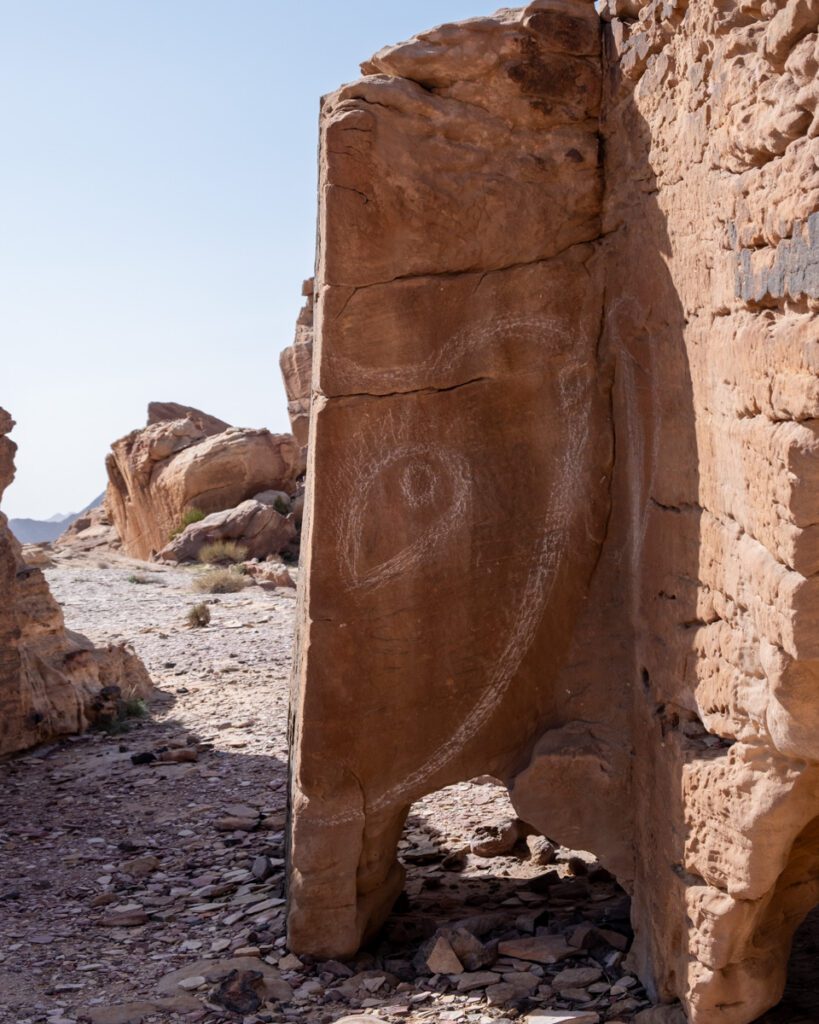
We got to see the Chicken Rock, but not the Mushroom one. However, while hiking to a mountain top, we did see the Elephant Rock. They’re nothing crazy or impressive, but we know that some people like to see them!
9. Visit the different rock drawings and inscriptions
In the Wadi Rum Desert, you’ll come across many different rock drawings and inscriptions. The two most notable are Alameleh Inscriptions and Anfashieh, which are archaeological sites. Here, you can see ancient rock art and inscriptions left behind by past civilizations.
The Alameleh Inscriptions are a collection of prehistoric petroglyphs and inscriptions etched into the sandstone cliffs. These ancient rock carvings date back thousands of years. You can see scenes of daily life, hunting expeditions, and religious rituals of the Nabatean and Thamudic peoples who once inhabited the region.
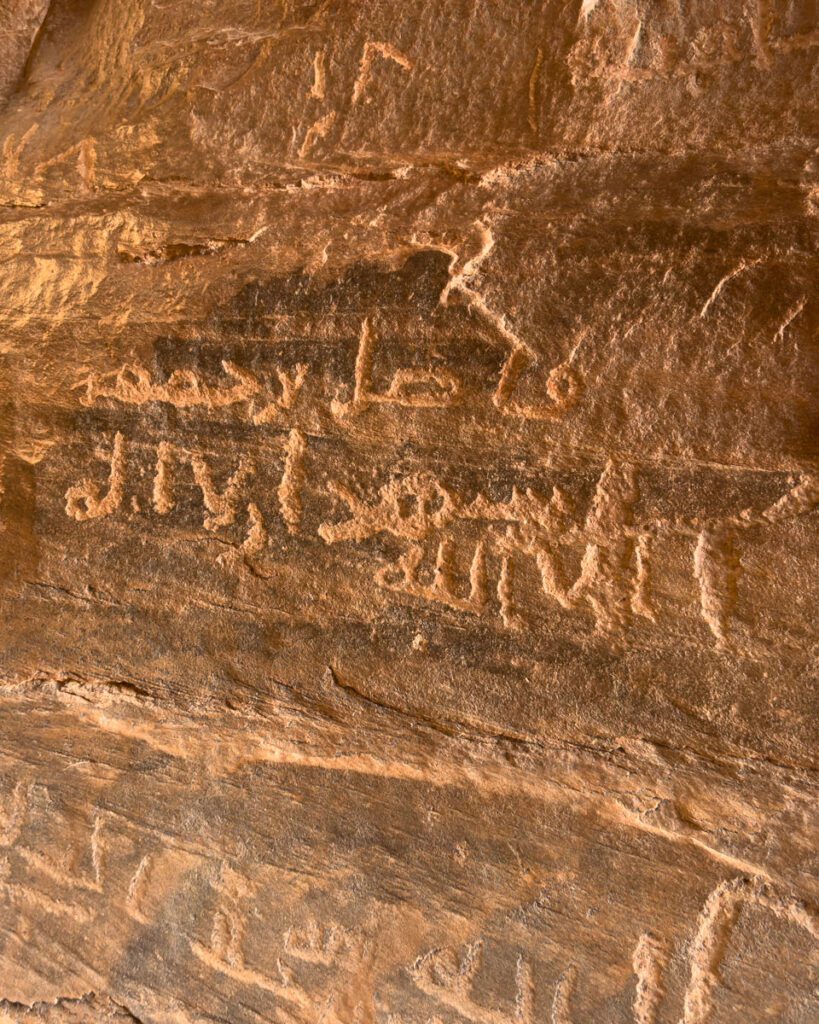
Anfashieh is another archaeological site, renowned for its rock art and ancient inscriptions. Just like the Alameleh Inscriptions, Anfashieh features a ton of petroglyphs and carvings created by the ancient inhabitants of this region. These intricate designs and symbols, some dating back to prehistoric times, depict wildlife, hunting scenes, geometric patterns, and religious motifs.
On our 2-day tour, we did not get to see these inscriptions. Maybe you’ll have more luck!
10. Visit the Nabatean Temple Aretas IV
The Nabatean Temple of Aretas IV is an ancient archaeological site. Built by the Nabateans, the temple is dedicated to Aretas IV, who ruled the Nabatean Kingdom from 9 BCE to 40 CE. It was used by the Nabateans to worship the goddess Allat. The temple was built on the ruins of Allat temple.
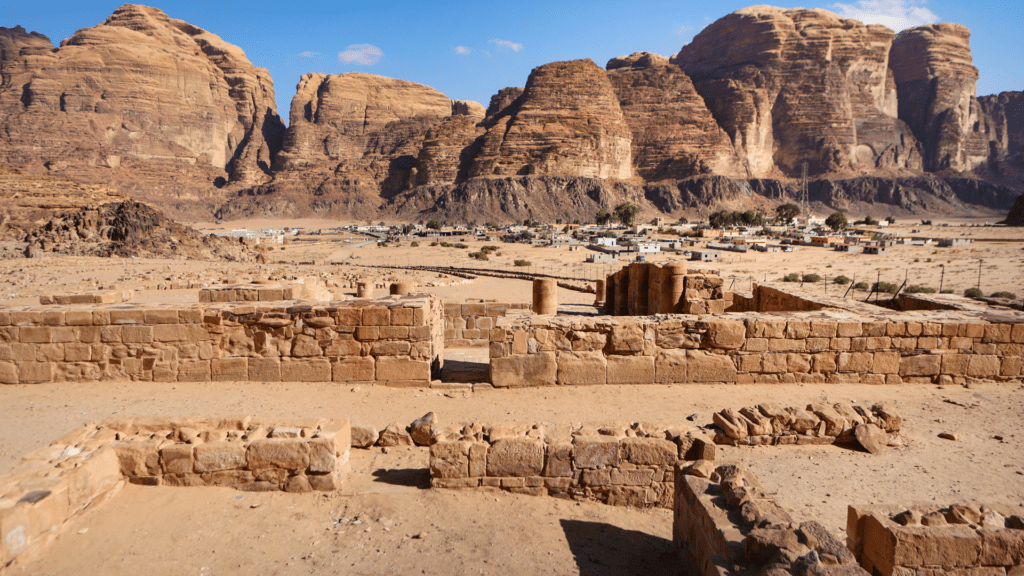
The temple complex is made up of several structures, including a central sanctuary, columns and courtyards, with intricate carvings and inscriptions. It served as a religious and ceremonial center for the Nabateans, where rituals and offerings were made to honor their deities.
11. Watch the stars on a clear night
One of the most amazing things to do in Wadi Rum is to star gaze. Some camps will set up a tour and take you deep into the desert so you have the least amount of light pollution. However, you can still see a ton of stars from your own camp.
If you have a clear sky, without a moon, you will get to see a ton of stars. More than any you’ve ever seen… unless you’ve been to New Zealand!
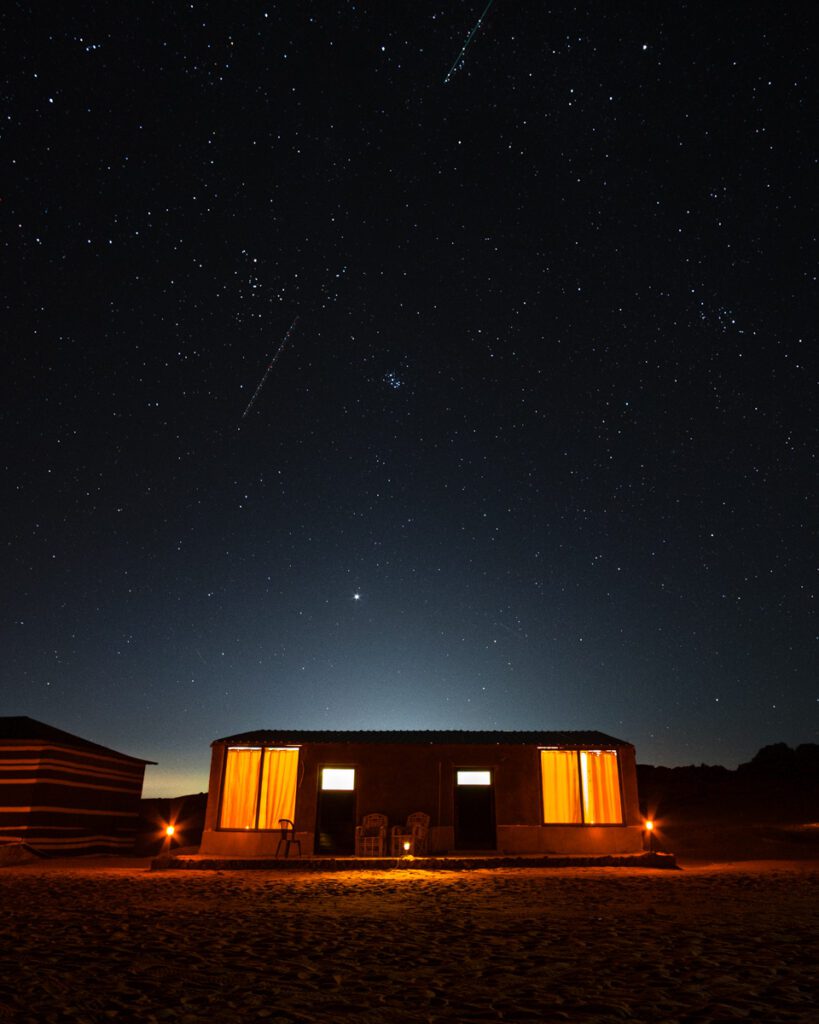
Again, it’s one of those experiences that keeps you really humble and makes you feel so small. At the same time, it makes you appreciate the beauty of this planet we call home.
12. Visit the house of T.E. Lawrence, one of the attractions in Wadi Rum
Another stop on your Jeep tour will be the House of T.E. Lawrence. Apparently, this is where he stayed during his time in the desert. They say he stayed in this house around 1917, however, today, you will barely see the 4 walls of the house. It’s in dire shape, with just the remnants of what it used to be.
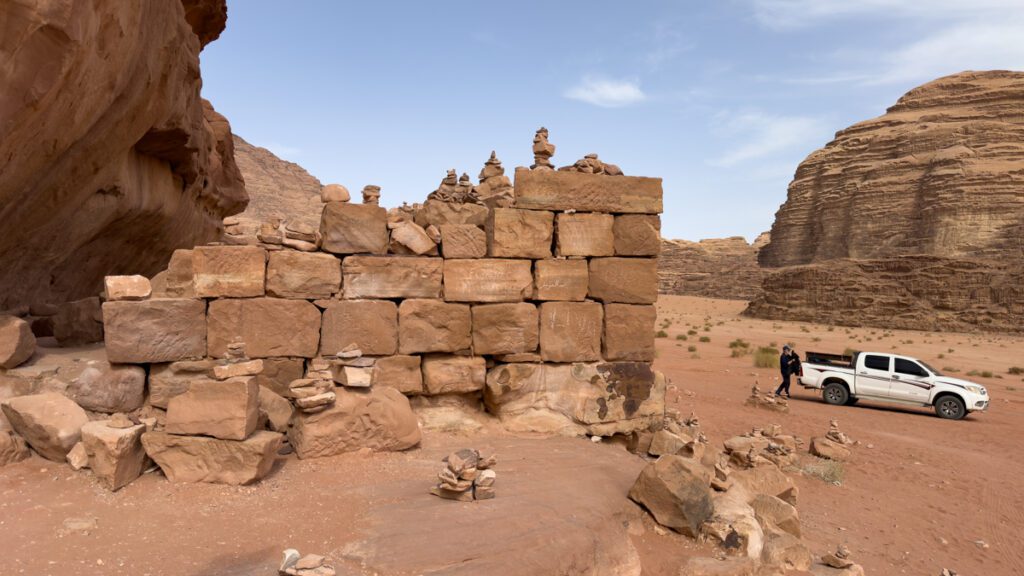
They say that the house itself was built on top of another, much older structure. It was built by Nabataeans more than 2,000 years ago and served as a station for passing caravans. The Bedouins call this place “The Small Palace”.
More interesting than the house is the hill behind it. After a short climb, you’ll get to the top of this rock formation where you’ll find thousands of small stones balanced one atop the other. They look a lot like the inuksuk we find in Canada. Back in the day, these structures were used as waymarkers by Bedouins to show the safest route along the mountain. Obviously, they no longer serve this purpose since tourists have started building their own structures.
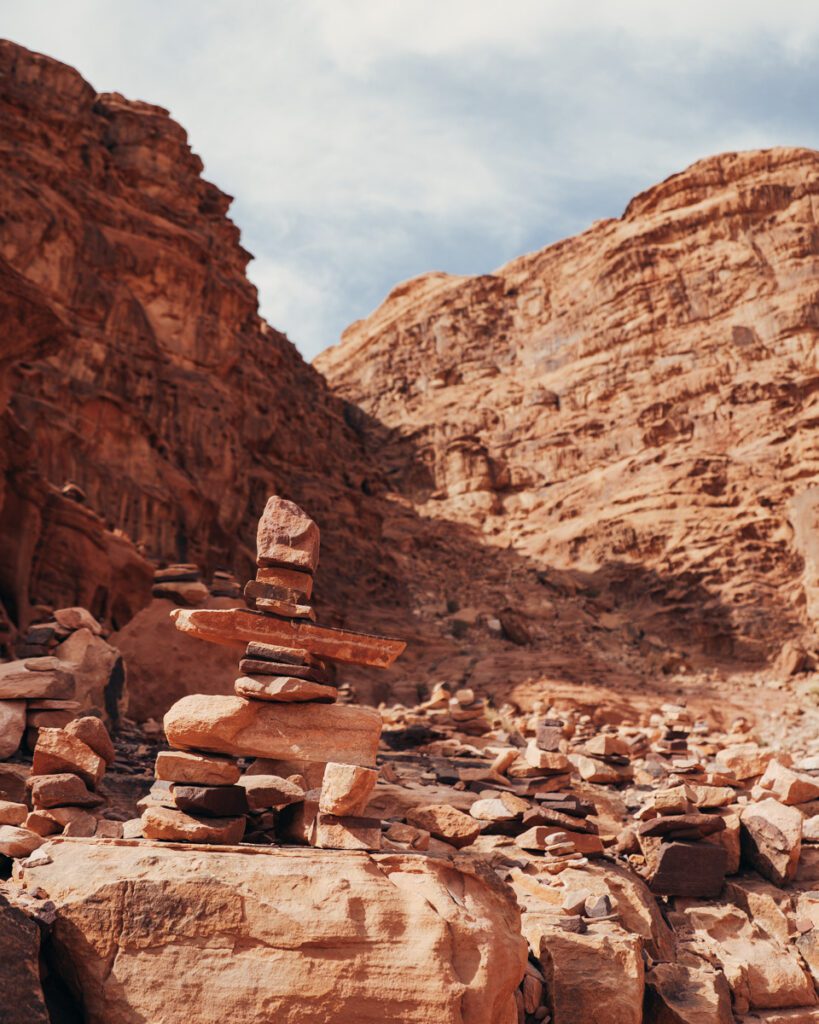
13. Special activities to do in Wadi Rum
There are other special activities you can do in Wadi Rum, if you have the time and the budget.
The first is one we don’t recommend, it’s a camel ride. This will cost between 15-20 JOD per person and the ride is about 1 hour long. It’s usually done around sunset so you have a beautiful glow around the desert.
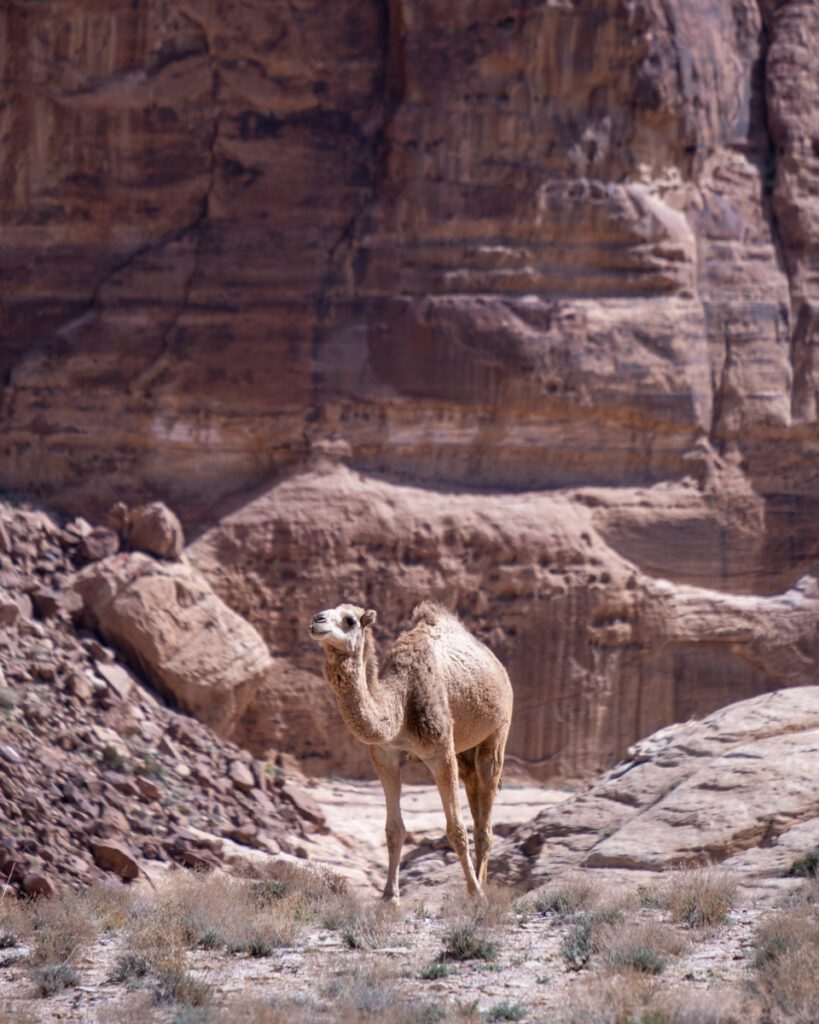
The reason we don’t recommend the camel tour is two-fold. First, it’s not always ethical for the camel. They’re not always well-treated and the desert conditions aren’t great for them to carry people. Next, we spoke to a couple who did the tour and they didn’t enjoy it. The ride itself is often uncomfortable and too long. Maybe you can ask for a shorter tour to avoid getting chapped or sore.
Another special activity you can do is a hot air balloon ride. This is more expensive at 140 JOD for 2 people. It looks like a beautiful experience, so if you have the budget to do it, we think it’s a great way to see the desert in a whole different light.
The bedouin camps and accommodations in Wadi Rum
The only way to get into Wadi Rum, let alone stay overnight, is by booking your guide and accommodations. Visitors cannot just drive their car into the desert – You will get lost as there are only natural landmarks… and can you really tell one rock formation from another? We can’t!
Your best bet is to book your accommodations before getting here. This will ensure you get a better price and you know what you’re getting. If not, they will haggle you when you get to the Visitor Center and since you’re a bit stranded without them, they can charge whatever they want.
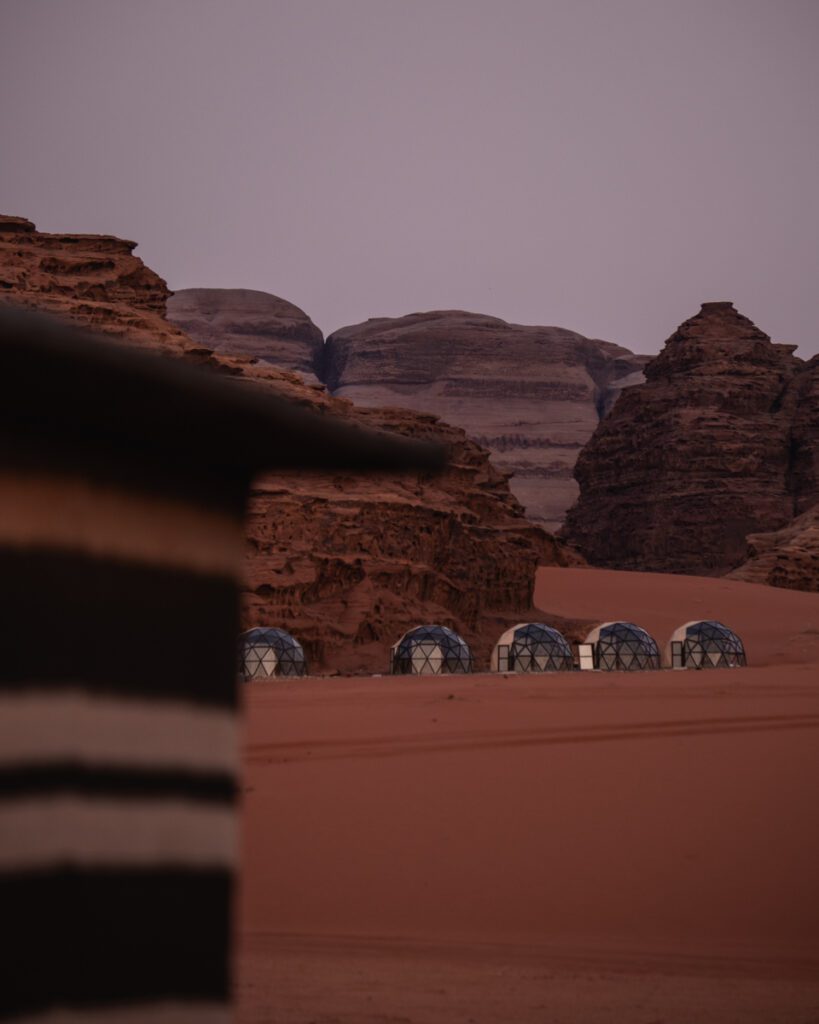
To choose your accommodations, we recommend searching on Booking.com. Pretty much all the accommodations are listed there, and you can read reviews to make up your mind. Just know that if you’re looking for a Bedouin camp, those are located within the Reserve. The camps on the outside of the Reserve may be foreign-owned.
Ultimately, all the camps offer pretty much the same type of package – a tent, a bubble dome, sleeping in a cave or sleeping under the stars. Some accommodations may have more amenities – hot tubs, hammocks, etc.
What’s included with your accommodations in Wadi Rum
Usually, breakfast and supper are included, or supper comes at an extra fee. Meals are usually buffets, with various options. If you have specific dietary restrictions, we recommend letting them know ahead of time (and making sure they understand what you mean). As usual, they didn’t quite understand what vegan meant, often saying they had vegetarian options. Just list out what you can and cannot eat.
You’ll need to book your Jeep tour or other activities with your accommodations or with their partner provider.
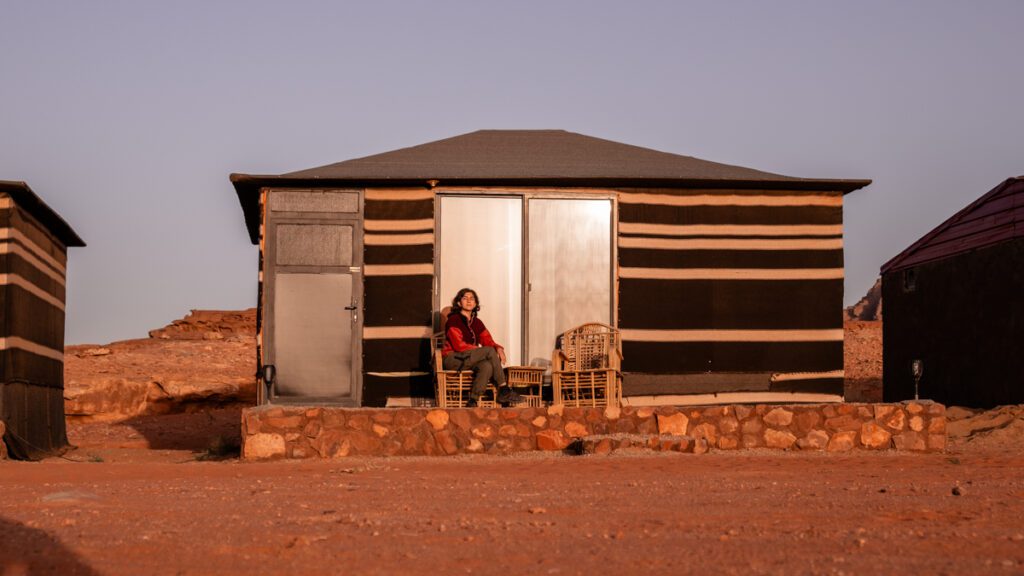
Once you book, the accommodations will tell you where to park your car in the Wadi Rum Village and come pick you up. Know that the village is safe – we kept our car there for 2 nights and it was still there when we got back! This transportation to and from the Desert to your car should also be included in your accommodation cost.
Ultimately, your choice of accommodations will depend on your budget and the type of accommodation you’re looking for. If you want to splurge on something special, this is the place to do it. Anyway, you can expect to pay a premium in Wadi Rum. It’s one of the most expensive places in Jordan.
Top-rated accommodations in Wadi Rum
Here are some of the top-rated accommodations in Wadi Rum based on different budget brackets. Please check to see what is included in the package.
- Budget-friendly accommodations:
- Mid-range options:
- Luxury stays:
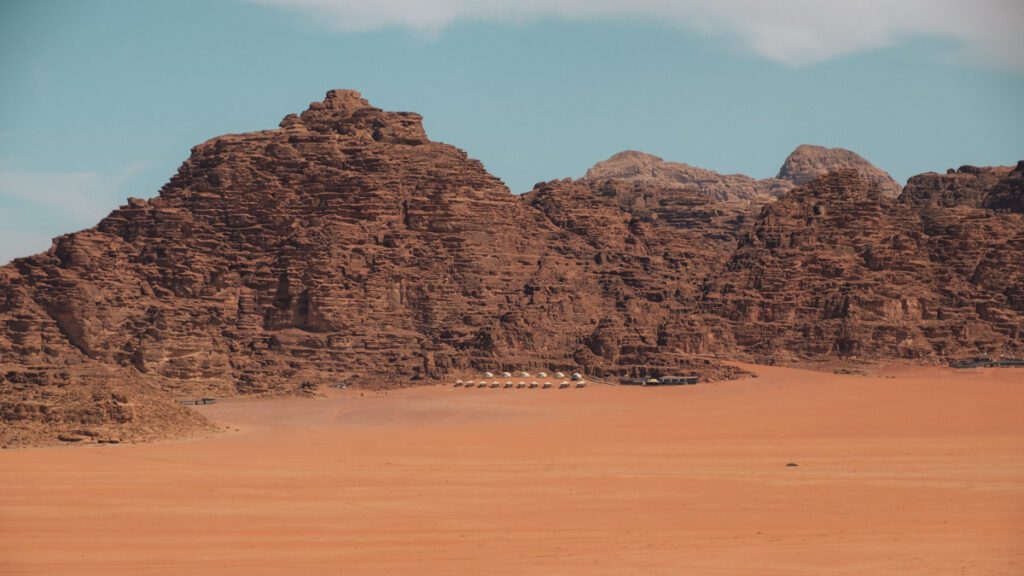
Choosing between a 1-day tour or a 2-day tour in Wadi Rum
One of the things we highly debated when we booked our stay in Wadi Rum was how many nights we should stay there. Many locals recommended we stay for 1 night, while others who had been to Wadi Rum told us to stay for 2. Ultimately, we opted for 2 nights. Here’s a breakdown of what your itinerary will look like whether you stay for 1 night or 2.
Note that some of the activities may vary depending on your provider. Our main recommendation is to get a full description of what to expect each day, including what is included in the pricing.
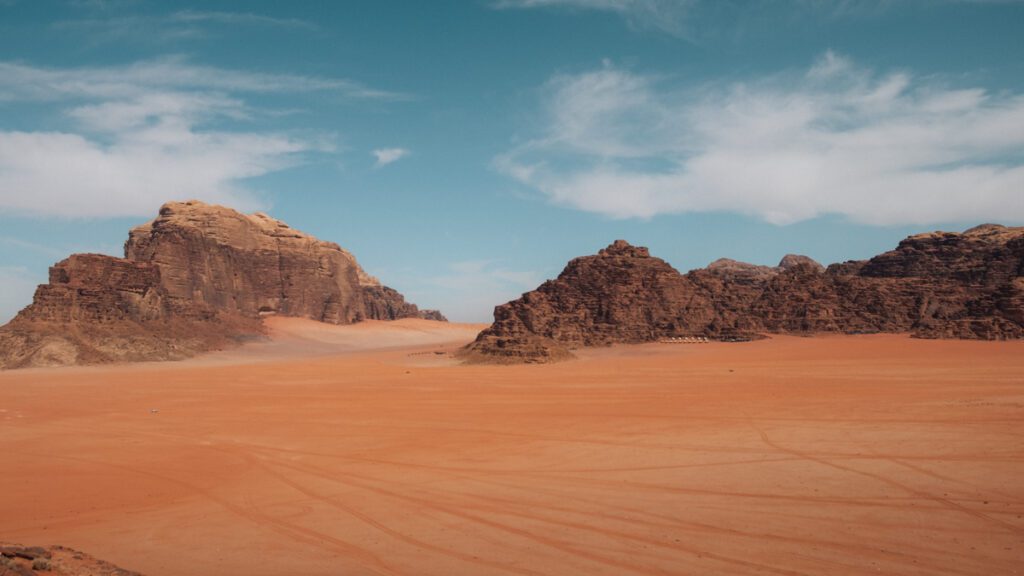
1 day in Wadi Rum
On a 1-day, 1-night stay in Wadi Rum, here is what your overnight stay will be like. Of course, some details might change depending on when you get there and how long your Jeep tour is.
- Upon arrival, your guide will pick you up from the village and take you to camp
- If you arrive early in the day, your guide will take you to the different attractions in the desert. Lunch will be provided. After the tour, you will be brought to your camp, around the end of the afternoon.
- If you arrive later in the afternoon, you will be taken directly to your campground.
- Once you arrive to your camp, you’ll have free time to explore the area, chill out, shower, etc.
- You will have time to watch the sunset. Make sure you don’t miss it!
- After sunset, you will have supper. This is done in a group setting, and often as a buffet.
- After supper, some accommodations will host a bonfire or nightly activities. Since we were in the low season, we didn’t get to enjoy one.
- After supper, you may also order a hookah, if you’d like.
- Before going to bed, make sure you sit out for a bit and admire the stars!
- In the morning, you’ll have breakfast as a group. Again, a buffet will be offered.
- If you arrived early the previous day, you’ll be taken back to your car in the morning.
- If you arrived later yesterday, you’ll do your Jeep tour today and then be taken to your car.
That’s your 1-day 1-night tour in Wadi Rum.
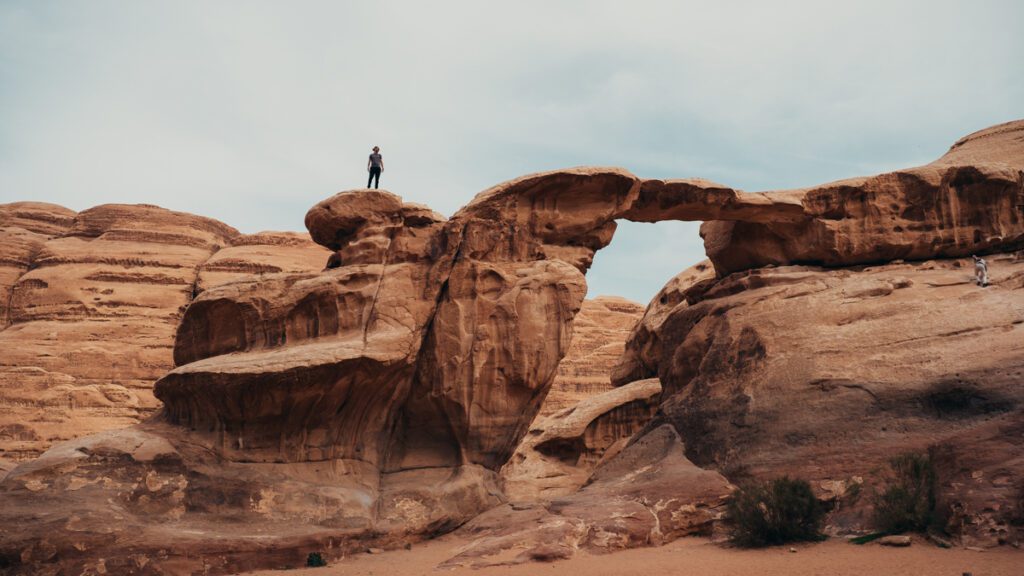
2 days in Wadi Rum
If you choose to stay for 2 days and 2 nights, which is the package we booked, this is what you can expect. The main difference is you’ll spend more time in the peace and tranquility of the desert and drive deeper into Wadi Rum.
Day 1
- This will be as we described it above.
- Much of what you do will depend on your arrival time and the Jeep tour you’ve booked. The longer the Jeep tour, the more you’re going to see.
Day 2
- On this day, if you haven’t done your Jeep tour, this is when you will do it.
- Since we arrived early on our first day (around 10-11 am), we got to enjoy a full second day in the desert.
- After breakfast, we hopped in the back of the Jeep and we drove out far into the desert. Our first activity was a hike up a beautiful mountain to get a view from the top.
- Our hike took about 2 hours. It wasn’t a strenuous hike, but we did take our time and enjoyed the view. Our guide took us up to the top, showing us the way.
- After the hike, we drove to a different part of the desert where our guide prepared lunch for us. We sat and had a picnic, enjoying the sights and sounds around us.
- After lunch, we have to admit, we were a bit surprised when our guide told us it was time to nap… It’s not quite the type of activity you expect to do when you’ve paid for a 2-day desert adventure. Although unexpected, it was a nice little break.
- Once we were done napping, we were driven to a hill that we had to climb and sandboard down. This activity didn’t really appeal to any of us in the group, so we forfeited this.
- Another surprise came after this. The driver told us to walk down the path. He would drive past us and we had to walk to his jeep. But when we got there, he drove off further.
- This came as a surprise to the whole group, We don’t mind a nice walk in the desert, but this was just odd. It felt a bit (a lot) like a way to waste time so we didn’t get back to the camp too early.
- At this point, we would have rather just hiked up another mountain, or gone to the camp where we could have read or chilled. We could have also been taken to different attractions we hadn’t seen the previous day.
- After the somewhat pointless desert walk, we went and visited another natural spring in the desert. Cool but nothing special.
- After this, we were taken to the camp. We arrived around 3:30-4 pm. We had time to hang out.
- We watched an amazing sunset.
- This was followed by supper and another evening of star-gazing.
- The next morning, after breakfast, we packed our bags and headed back to the Village to get our car.
This is how we spent our 2-day itinerary in Wadi Rum.
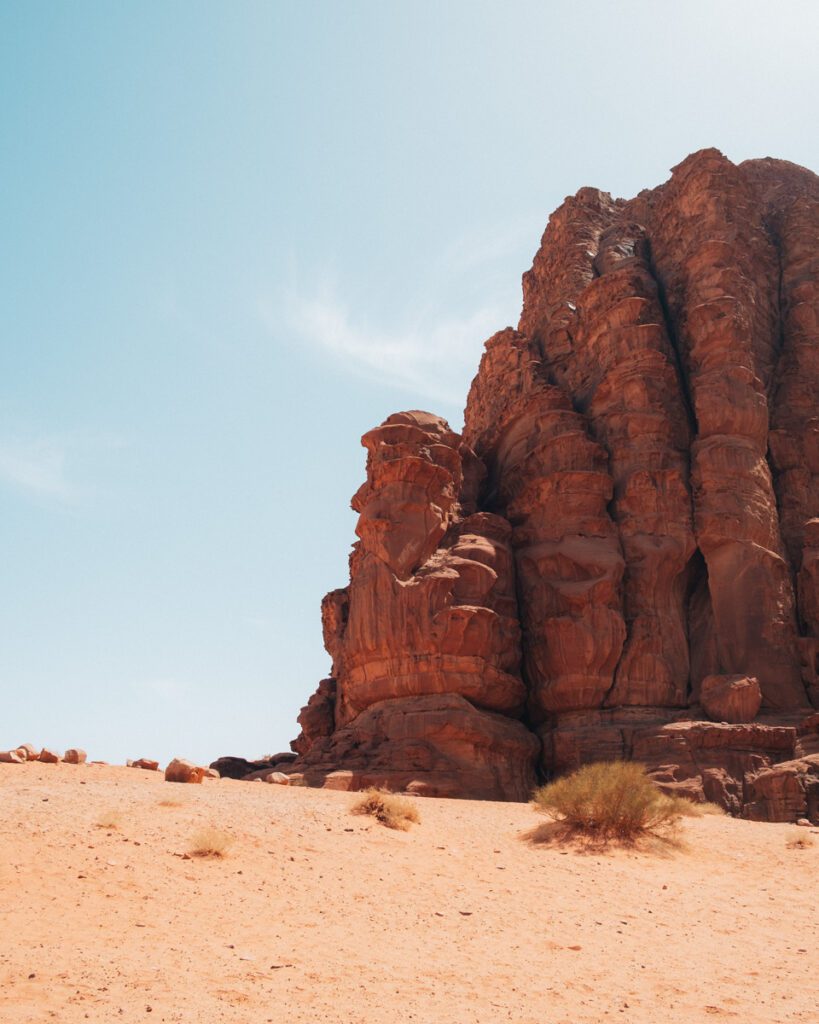
Should you spend 2 nights in Wadi Rum?
Now that you know what to expect from your 2 days, 2 nights in Wadi Rum, the choice is yours. However, there are some points to take into consideration. Does your budget allow for 2 days & nights? Do you want to escape the hustle and bustle of the cities and relax? Do you want to see some epic sunrises, sunsets and starry skies?
If those things appeal to you, then sure, spend 2 nights in Wadi Rum.
Despite the randomness of the walking, the nap and the sandboarding no one wanted to do, we did enjoy the peace and quiet of being in the desert. It was a nice break from the constant go-go-go feeling of traveling.
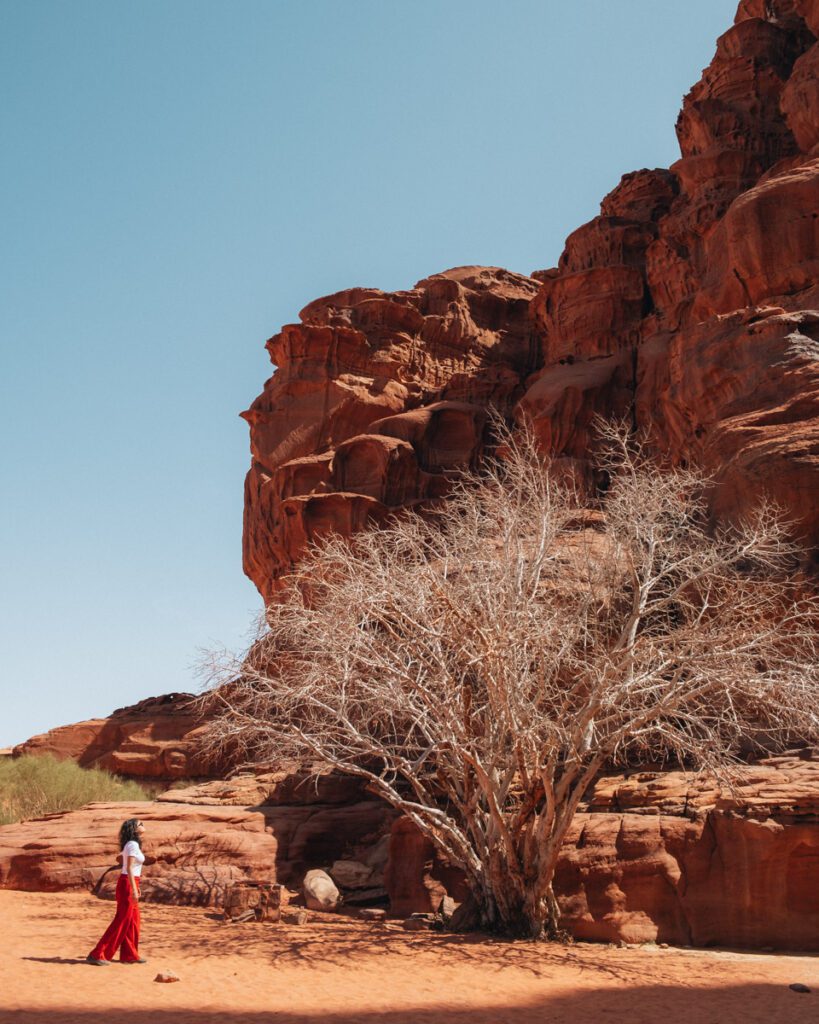
We all (the group of 2 women and us) weren’t fully aware of what the second day entailed. We were told it would be a mountain hike, a Bedouin lunch and some activities. Because of the vagueness, we didn’t imagine that ‘activities’ meant sandboarding and useless walking. Had we pressed and asked for more details, we may have been able to tailor the second day more to our liking.
Let this be a lesson for those looking to book 2 nights in Wadi Rum. Make sure you’re 100% clear on what you’ll see and what each day will include. With this, if your budget allows it, go ahead and book that second day!
How to get to Wadi Rum
There are many different ways to get to Wadi Rum from anywhere in Jordan. Here are the main ways to do it.
Getting to Wadi Rum by car
If you’re planning on freely exploring Jordan, your best bet is to get a rental car. We chose to get one from Rushmore as we had 18 days to explore the country. This was the best decision.
We were able to move around in total freedom.
We could stop on the side of the road wherever we saw a nice view (which happens so often).
We could choose to move on or stick around depending on whether we liked a place or not.
We could visit places in Jordan that were off the beaten path.
We could change our plans at a whim! Which we did! Often…
Having this type of freedom is just amazing. And considering how good the pricing at Rushmore was, it was better for us to explore with a rental car than with shuttles or public transportation.
If you plan on renting a car, we recommend checking our full guide here about driving in Jordan.
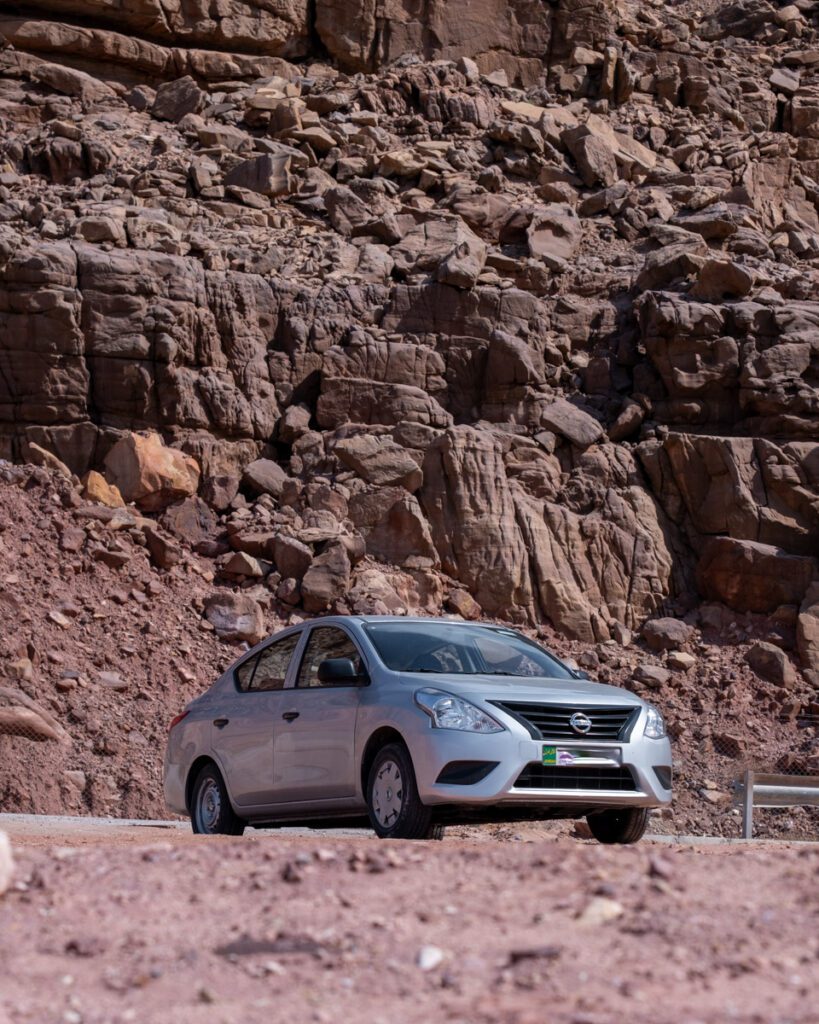
Getting to Wadi Rum by bus
Jett bus is the main provider of public transportation in Jordan. They can get you to Wadi Rum from many different locations.
The friends we made in Wadi Rum took Jett Bus to get around and they loved it. The service was punctual, the buses were comfortable and they connected them to all the highlights in Jordan.
If you don’t drive or would rather use public transportation, Jett Bus is a great option.
To get to Wadi Rum, they have the following routes & Schedules:
- Aqaba to Wadi Rum. Runs daily at 8 am. 15 JOD per person
- Petra to Wadi Rum. Runs daily at 11:30 am. 15 JOD per person
- Amman to Wadi Rum. Runs daily at 7:30 am. 20 JOD per person
Getting to Wadi Rum from Amman
The route from Amman to Wadi Rum will take about 4 hours, depending on how you choose to get there. It’s 321 km to get there and most people end up using the King’s Highway to do so. If you spend time in Amman, check out our guide here.
If you choose to use a taxi transfer, it will set you back about 110 JOD. If not, you can book one of the transfers here from the airport or from Amman.
How to get from Aqaba to Wadi Rum
The route from Aqaba to Wadi Rum is a short 1-hour drive. And it’s quite a scenic route that’s only about 70 km long! We have a full Aqaba guide for you here.
Again, you can choose to take your car, Jett Bus, or a taxi. A taxi will set you back between 25-35 JOD for the ride, depending on where they pick you up. At this point, it might be cheaper to take a taxi than to take Jett bus, especially if the bus schedule doesn’t work with your own arrival time and plans.
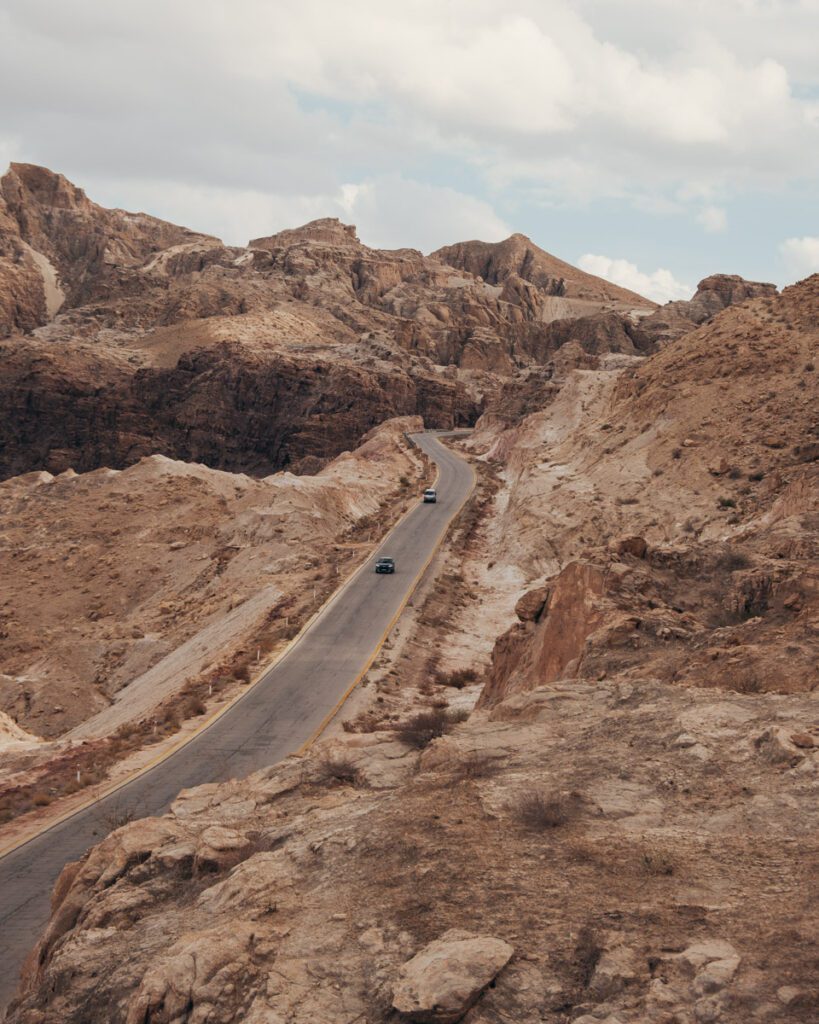
How to get from Petra to Wadi Rum
Most people that we met in Wadi Rum were coming from Petra. This is another short 2-hour drive, about 120 km. Check out our Petra guide here.
Again, you can choose to drive here, take a Jett Bus, or a taxi. The taxi ride from Wadi Musa (the village near Petra) is 45 JOD. You can also choose to go with a private transfer, like some of these which are top-rated:
Movies filmed in Wadi Rum
We mentioned how being in Wadi Rum felt like being on a different planet. It’s no surprise then, that so many movies have been shot here. Here’s a quick list of the movies you can watch to see the amazing landscapes of Wadi Rum.
- Lawrence of Arabia (1962): This epic historical film depicts the life of T.E. Lawrence during World War I. Wadi Rum’s vast desert terrain was used extensively to represent various locations in the Arabian Peninsula. You can even visit some of the places made famous by T.E. Lawrence.
- Transformers: Revenge of the Fallen (2009): The sequel in the Transformers film series includes scenes set in an Egyptian desert… except it was the deserts of Wadi Rum they were shooting!
- Prometheus (2012): This sci-fi film serves as a prequel to the “Alien” franchise. Wadi Rum’s landscapes were used to represent an alien planet on many occasions.
- The Martian (2015): Another sci-fi film which shows Matt Damon as an astronaut stranded on Mars. Wadi Rum’s red sands and rocky formations provided the perfect setting.
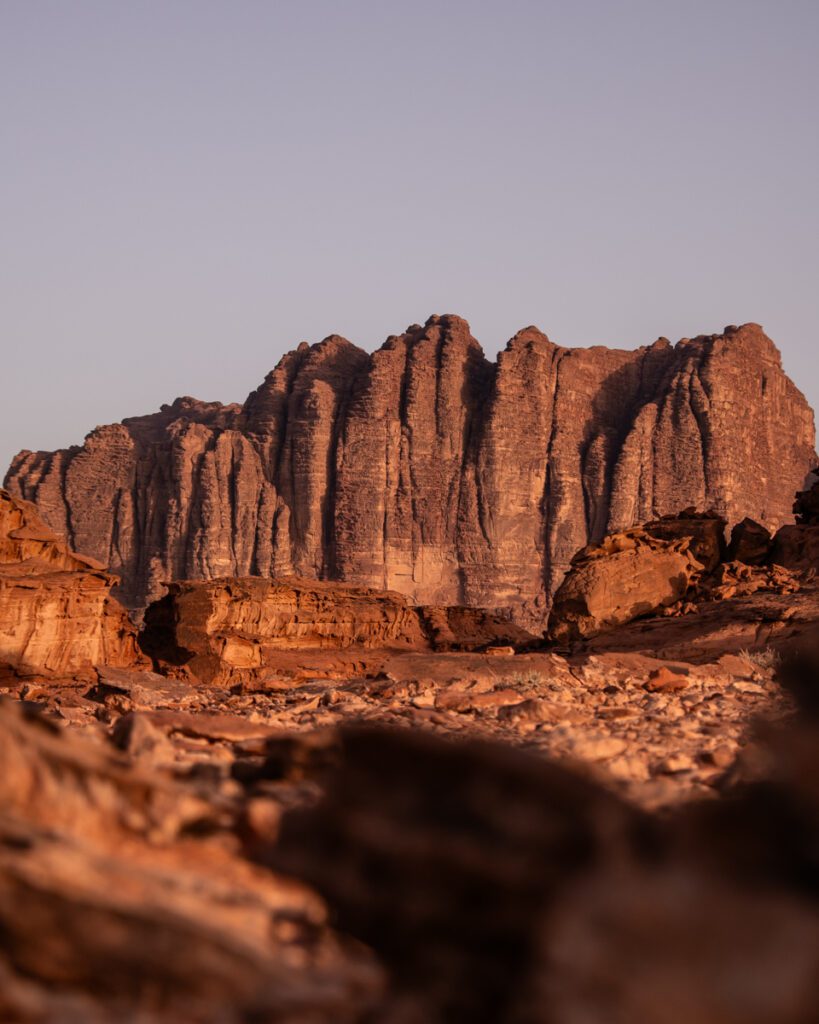
- Rogue One: A Star Wars Story (2016): This standalone Star Wars film features scenes set on the desert planet Jedha. Wadi Rum’s dramatic rock formations and sandy expanses were used to depict the planet’s rugged terrain.
- John Wick: Chapter 4 (2023): In one of the key opening scenes, John Wick races across the desert on horseback to track down one of the highest-ranking members of the High Table – The Elder. This scene is shot in Wadi Rum.
- Dune (2021): Directed by our Quebec compatriote Denis Villeneuve and based on Frank Herbert’s novel of the same name. The vast and striking desert landscapes of Wadi Rum served as the perfect setting for the desert planet of Arrakis in the film.
- Dune Part 2 (2024): It’s no surprise, after the success of the first Dune Movie, that they would shoot the sequel here. There will also probably be scenes from Wadi Rum featured in the third installment of Dune.
What to pack for Wadi Rum
Whether you’re coming in the summer, the winter or any time of year to visit Wadi Rum, there are a few things you should always pack, beyond what you’re already packing for Jordan.
- Sunscreen and sun protection. The sun is hotter and stronger than you think. You’ll want to stay protected at all times since there is very little shade. Wear a good sunscreen and reapply often. You can also wear long sleeves, but light and breathable clothing.
- A warm jacket for the night. Even in the summer, it gets quite chilly in Wadi Rum. Make sure you pack layers or a warm jacket to stay protected from the cold.
- Hiking shoes or good running shoes. Especially important if you’re going to be climbing up all the rock formations.
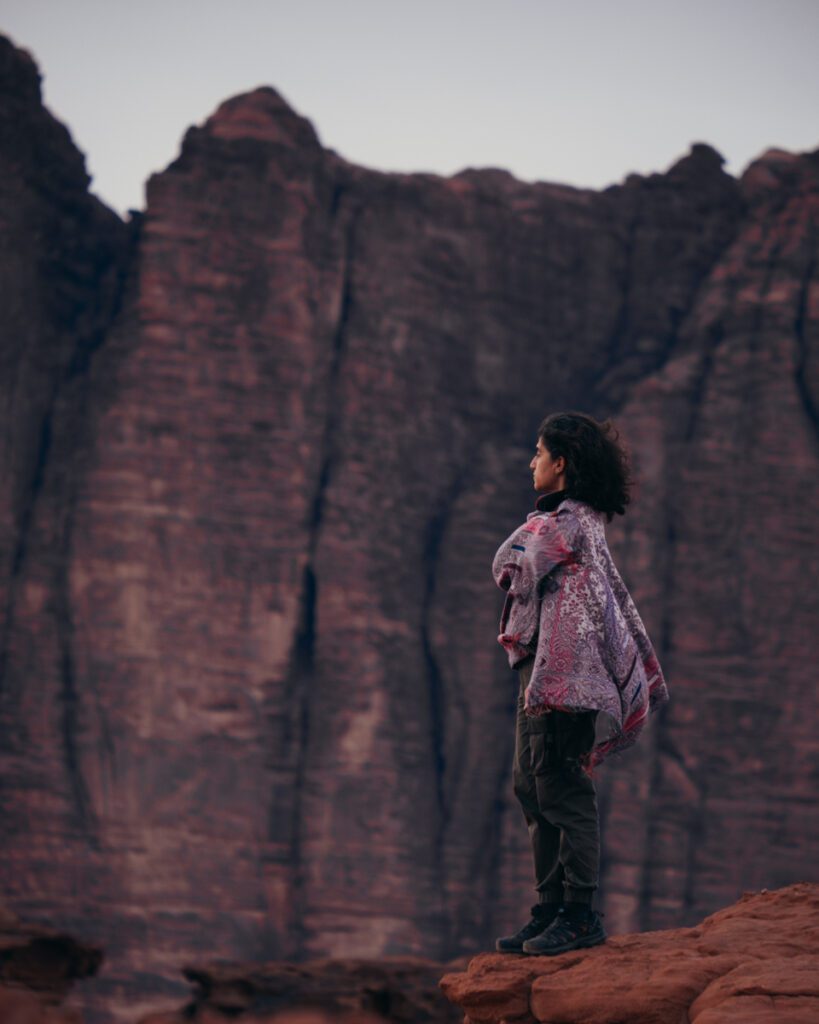
- A reusable water bottle. To refill before heading out on adventures. Please avoid plastic water bottles, which is what they have in the camps.
- A hat or cap. To stay protected from the sun.
- A rainjacket. In the winter months, you can expect more rain. You’ll be happy to have a rain jacket.
- Flip flops. Perfect for walking from your tent to the main common area of your camp. It’ll avoid you having to constantly empty sand from your shoes.
- A good book. There is a lot of downtime in Wadi Rum. Bring a good book and enjoy reading it in the quiet desert.
Is Wadi Rum expensive?
The short answer to this question is yes! Out of the 18 days we spent in the country, Wadi Rum was probably one of the most expensive places in Jordan (not including the scuba diving in Aqaba).
Since the Bedouins have a monopoly on the accommodations and activities in Wadi Rum, they can price it as they please, especially since they know that people will be coming to this must-see place in Jordan.
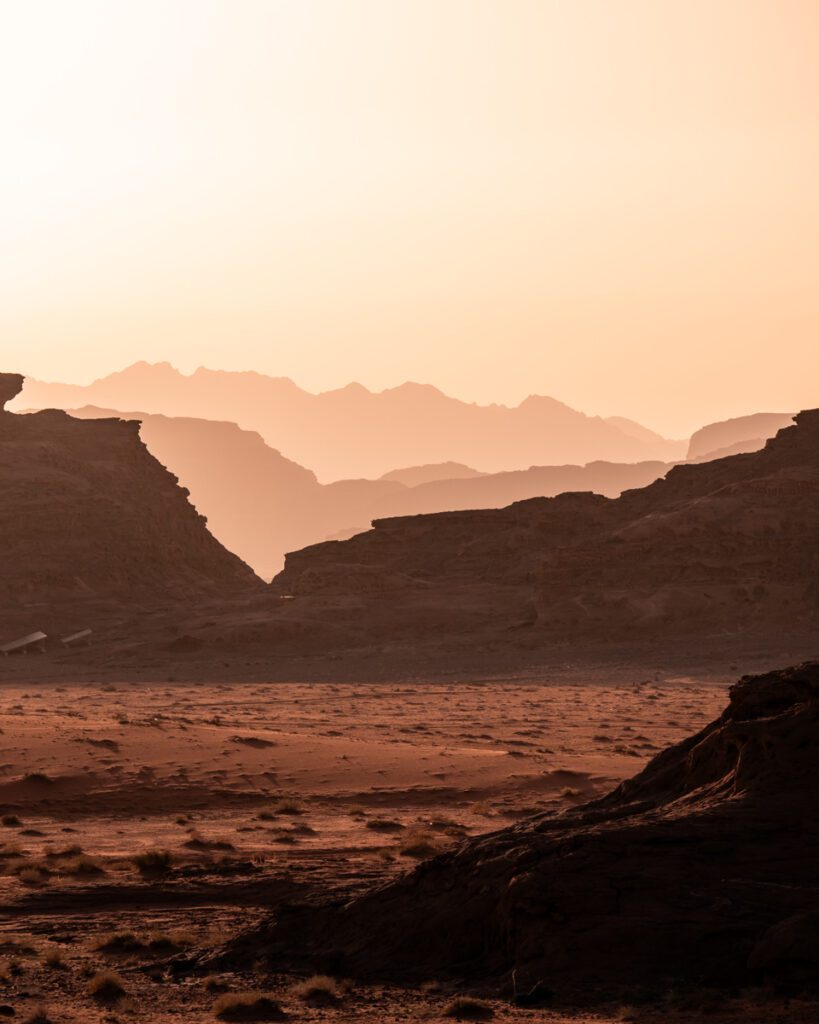
Just to give you a loose idea, here are some of the prices we got for Wadi Rum:
- Activities:
- Camel ride: 15-20 JOD per person
- Stargazing: 20 JOD per person. Note that for most camps, you can do this from where you are. No need to go out further.
- Hot air balloon: 140 JOD for 2
- Accommodations:
- Private tent with breakfast: 50 JOD for 2
- Beach tent with breakfast: 50 JOD for 2
- Panorama shore tent with breakfast: 70 JOD for 2
- Martian bubble with breakfast: 100 JOD for 2
- Packages:
- Full package for 2: Dinner & breakfast. Overnight in a private tent, jeep tour with lunch, camel ride, sand skiing: 250 JOD for 1 night
- 2-day, 2-night stay with a 2-day jeep tour, all meals included: 200 to 220 JOD
Considering most meals in Jordan cost around 5-8 JOD per person, and you can get good accommodations for 30 JOD, there is a considerable upcharge when it comes to staying overnight in Wadi Rum.
Conservation efforts to preserve Wadi Rum
In 2011, Wadi Rum was designated as a UNESCO World Heritage Site. This award raised awareness about the significance of Wadi Rum on a global scale. It has also led to increased conservation efforts and sustainable tourism practices.
Since Wadi Rum is one of the most touristic and popular destinations in Jordan, it’s no surprise that the government and locals are facing grave ecological problems with the influx of visitors. This is caused mainly by littering and off-road vehicles damaging the fragile ecosystem.
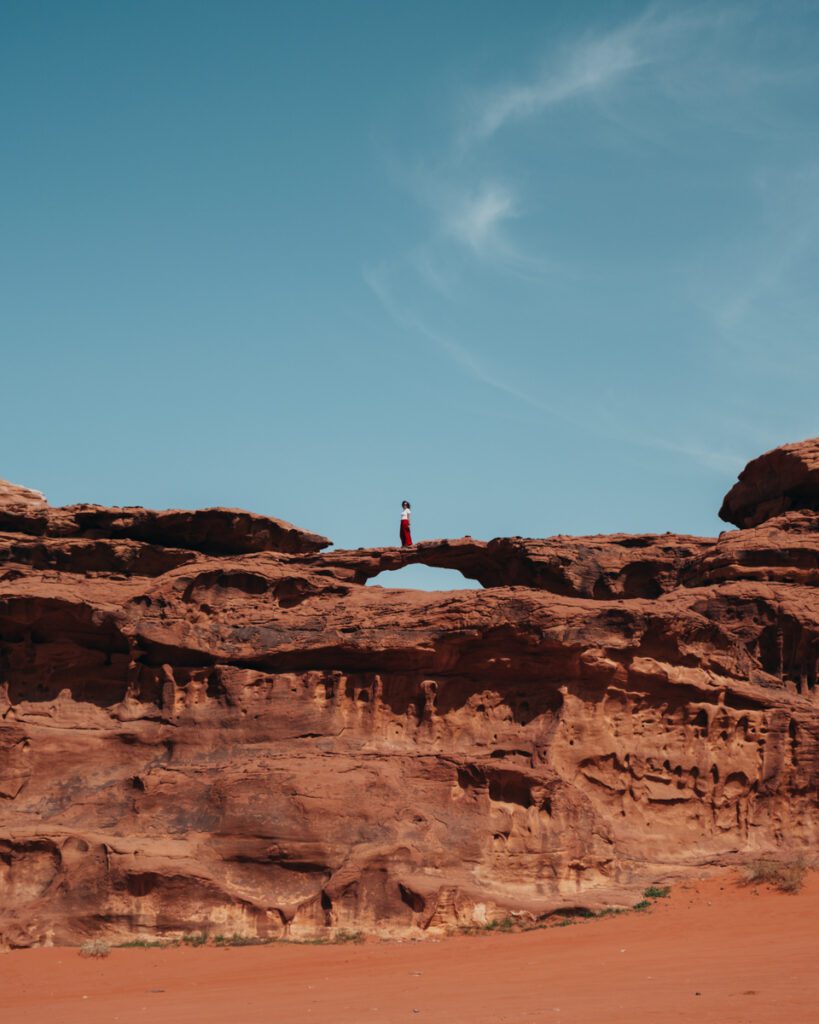
Here are some of the things you can do to help the environment in Wadi Rum.
- Leave no trace. If you can, don’t throw out anything in Wadi Rum. Instead, take it to your next destination and throw it out there. This will help keep the areas clean and reduce the amount of waste management needed.
- Take nothing. Although you may want to bring some of the magic of Wadi Rum home with you, we recommend you touch nothing and take nothing. No rocks, no plants, nothing. Just take pictures and create memories.
But it’s not all on travelers, know that there is a major conservation program underway to tackle these issues. They are creating zoning schemes, better-organized vehicle routes, more tourist education and implementing a team of rangers to patrol the area.
Everything to know about visiting Wadi Rum
We hope that this article will help you make some better decisions when planning your trip to Wadi Rum. We covered everything we wish we had known about coming to the desert and then some.
Let us know in the comments if we covered all your questions. Are you excited about visiting Wadi Rum? What are you most looking forward to? Also, are there any questions we missed? Do you need any more info? Let us know so we can update the article.
Thank you so much for reading the article all the way through!
We put a lot of time and effort into the content we create. Please like, comment and share – every action on your part helps us out tremendously and is very appreciated.
You can also help us by pinning this article for others to find.
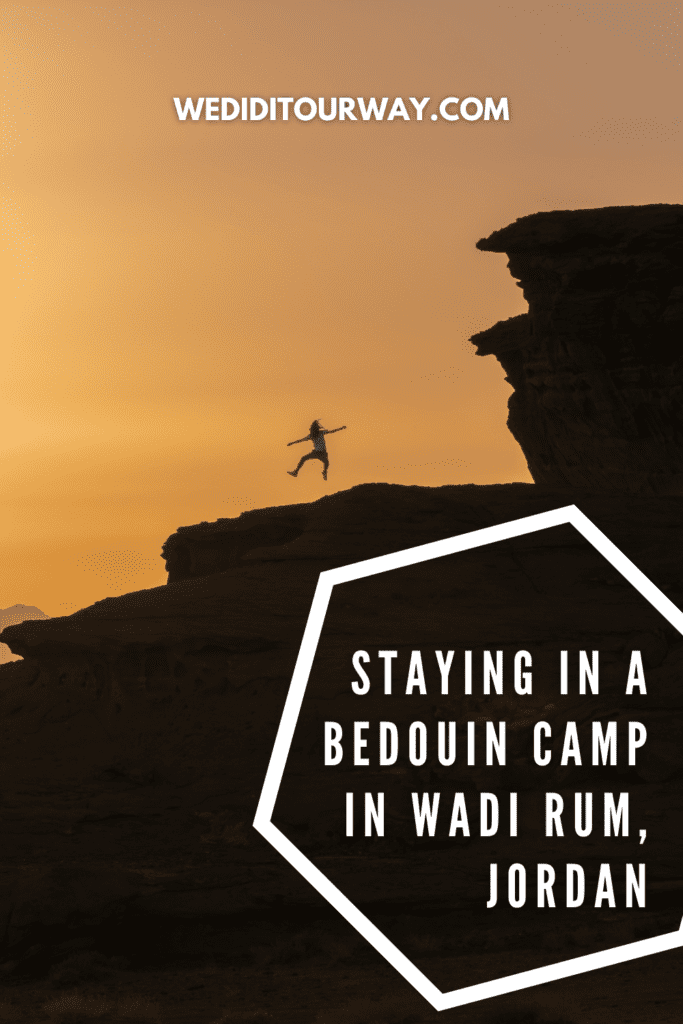
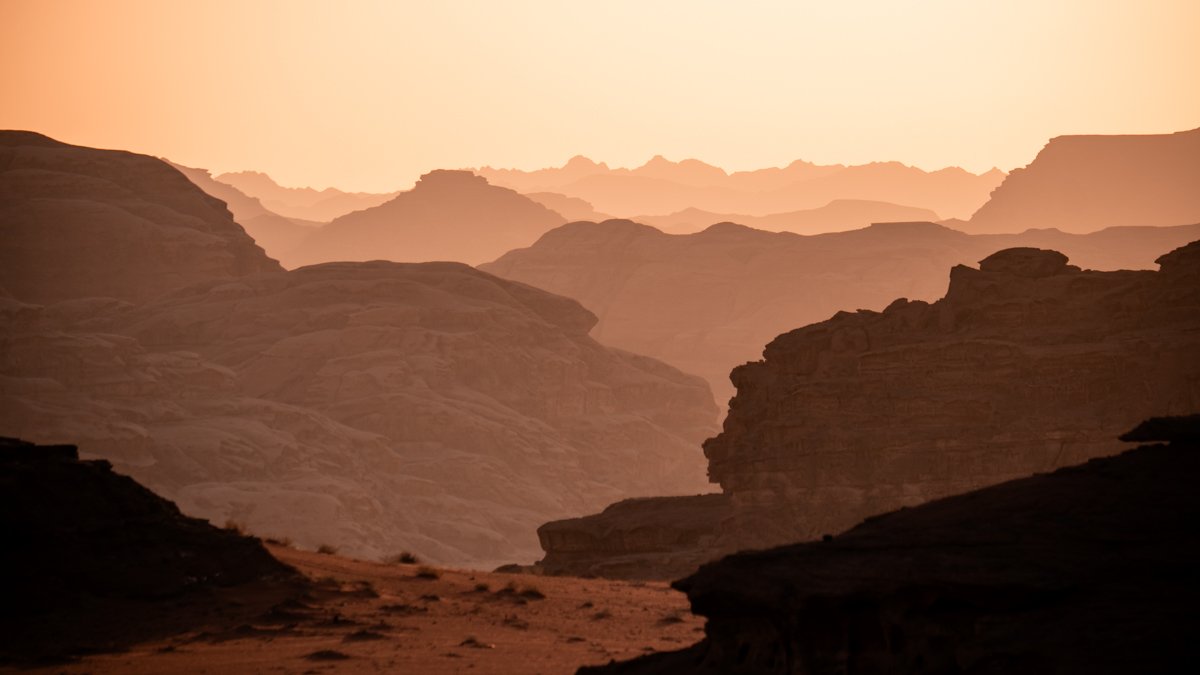
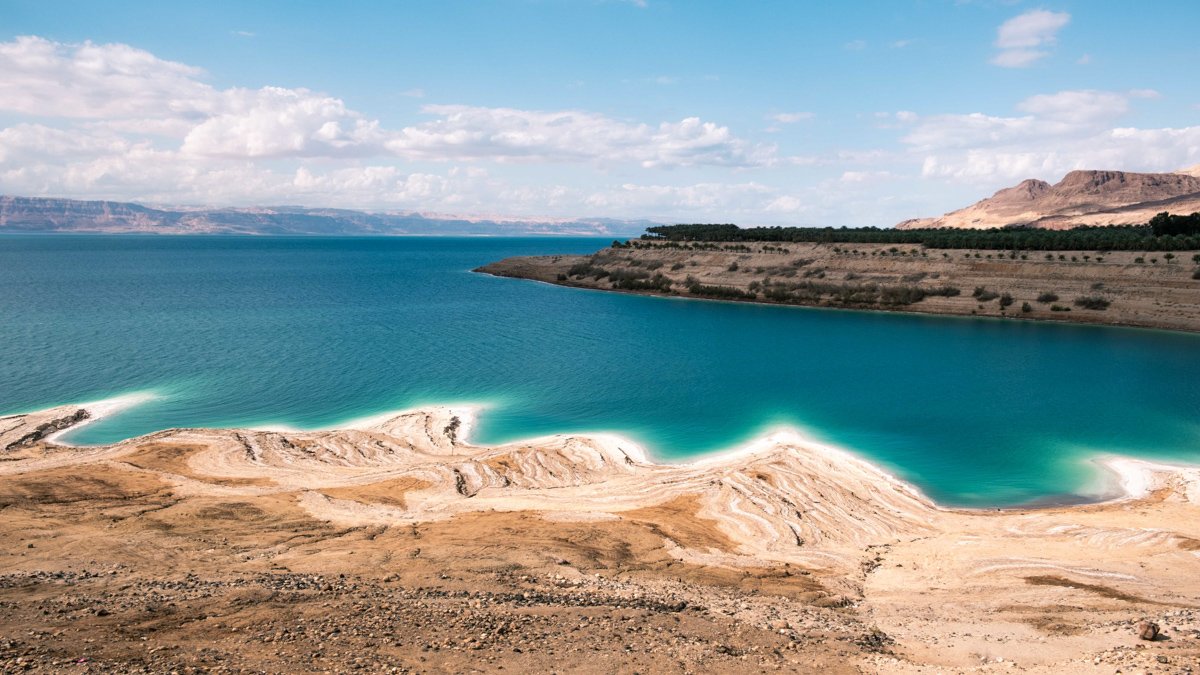
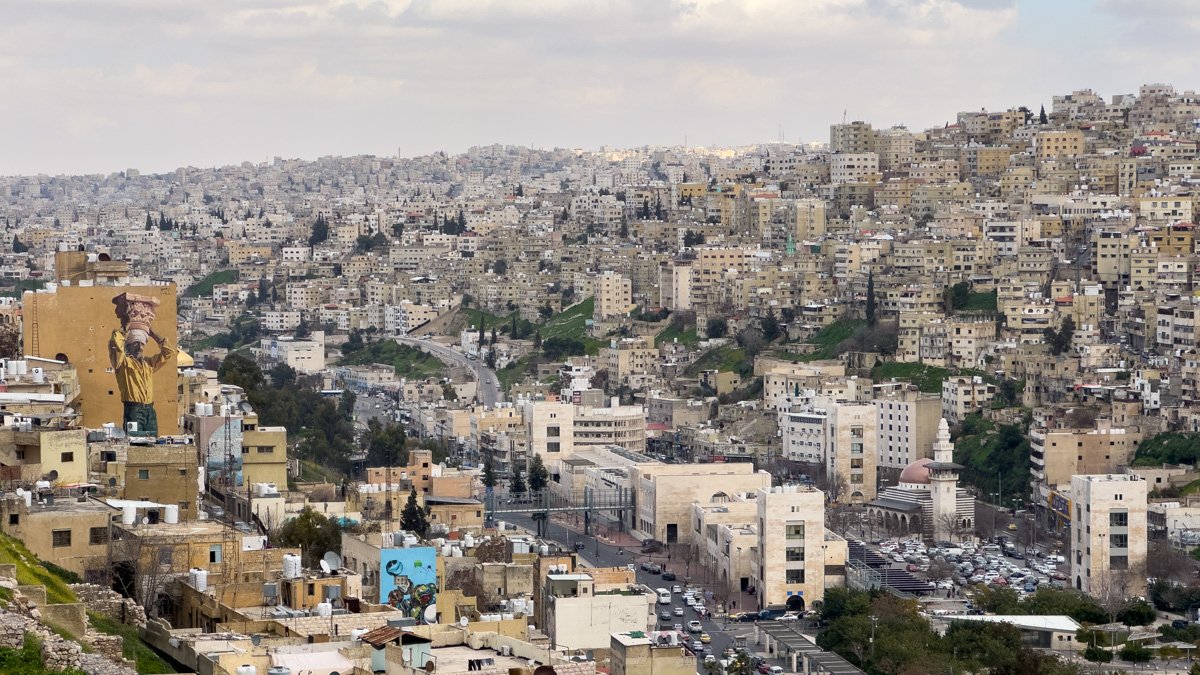
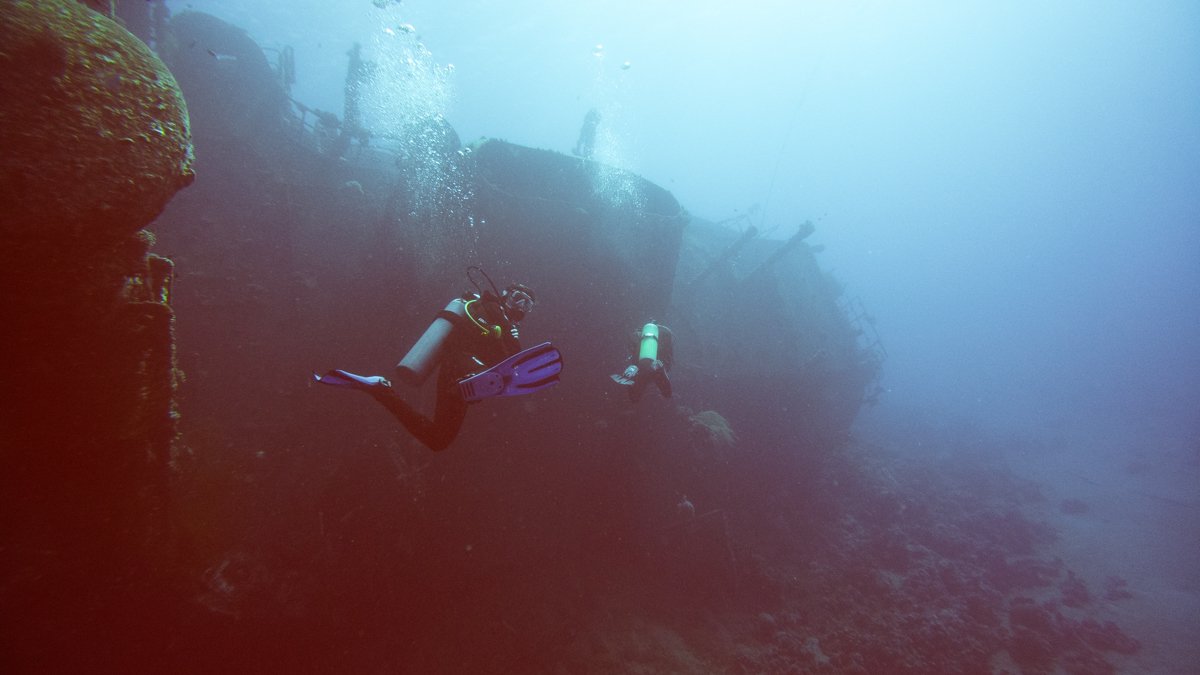
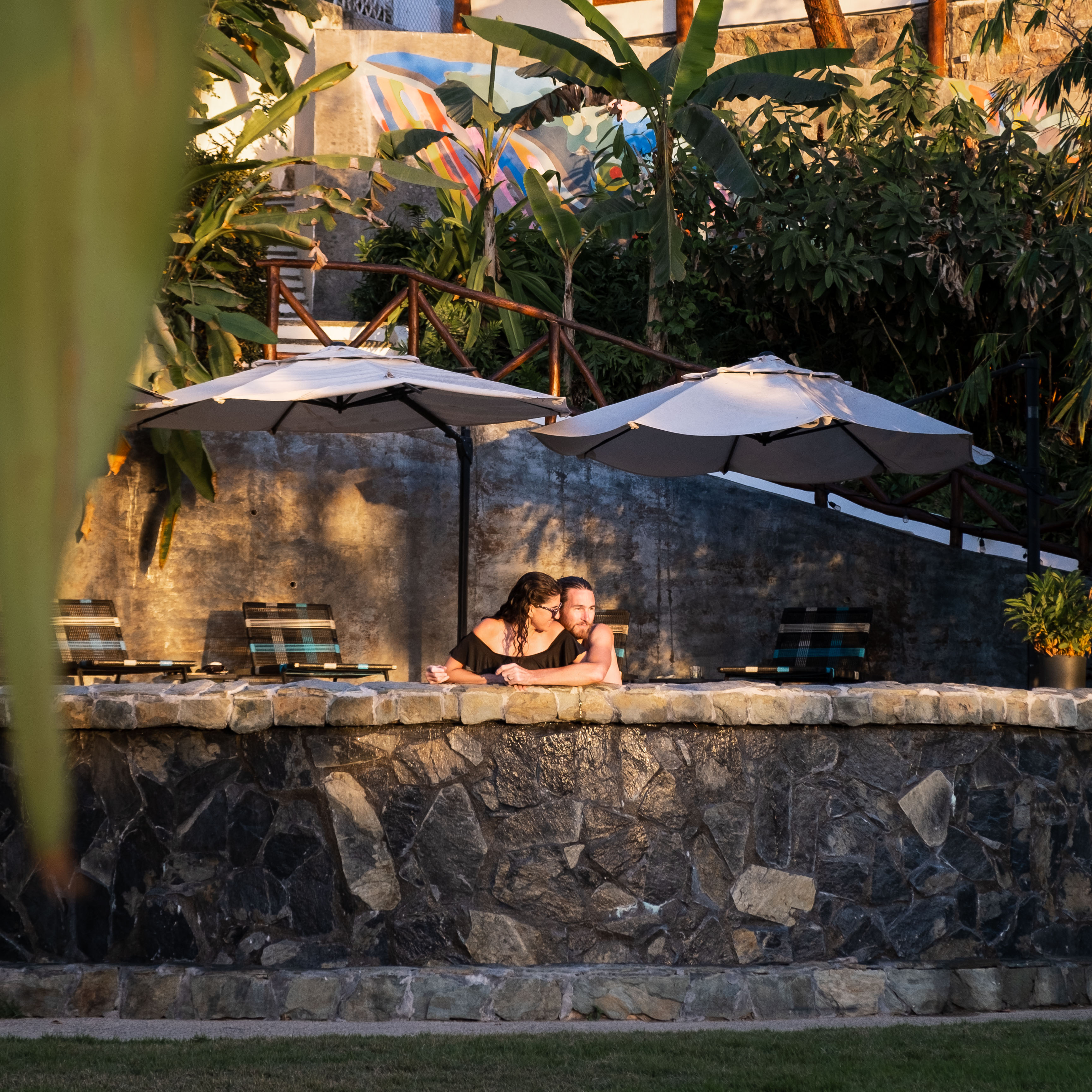

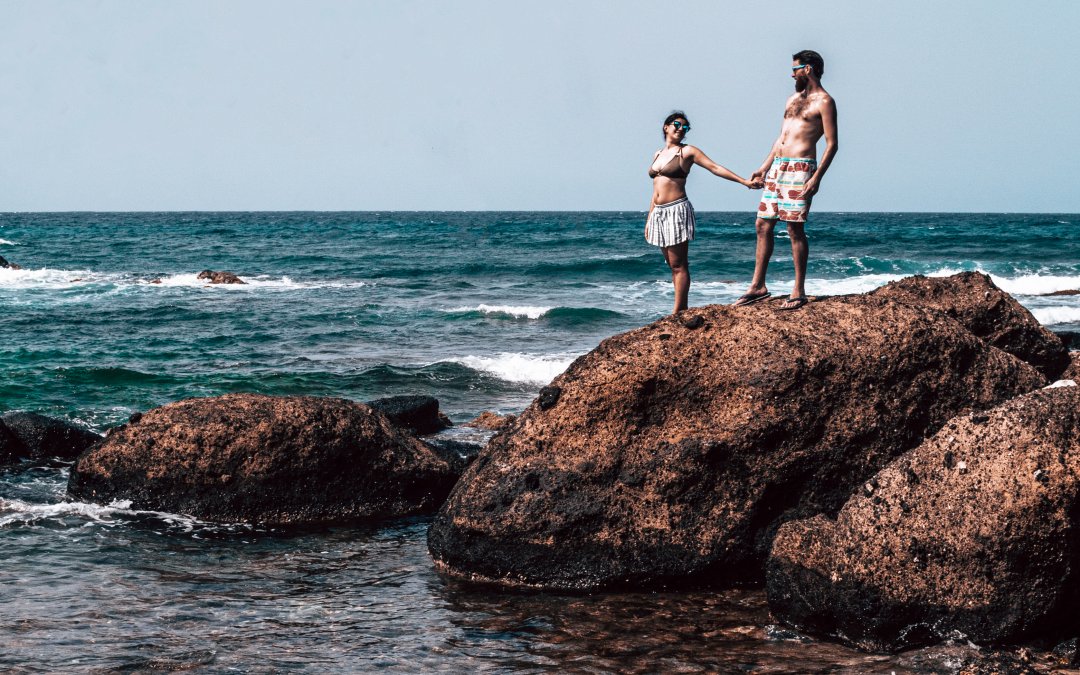
0 Comments